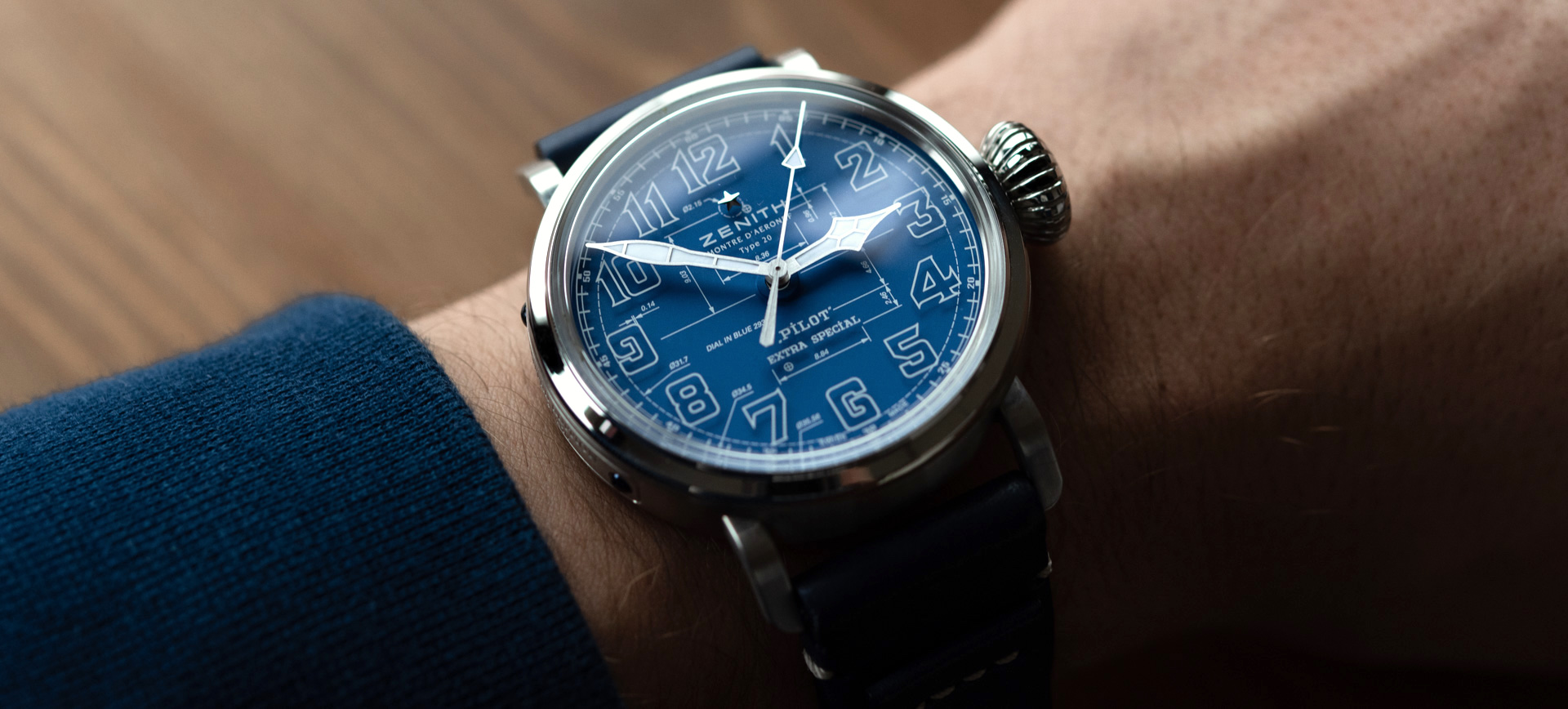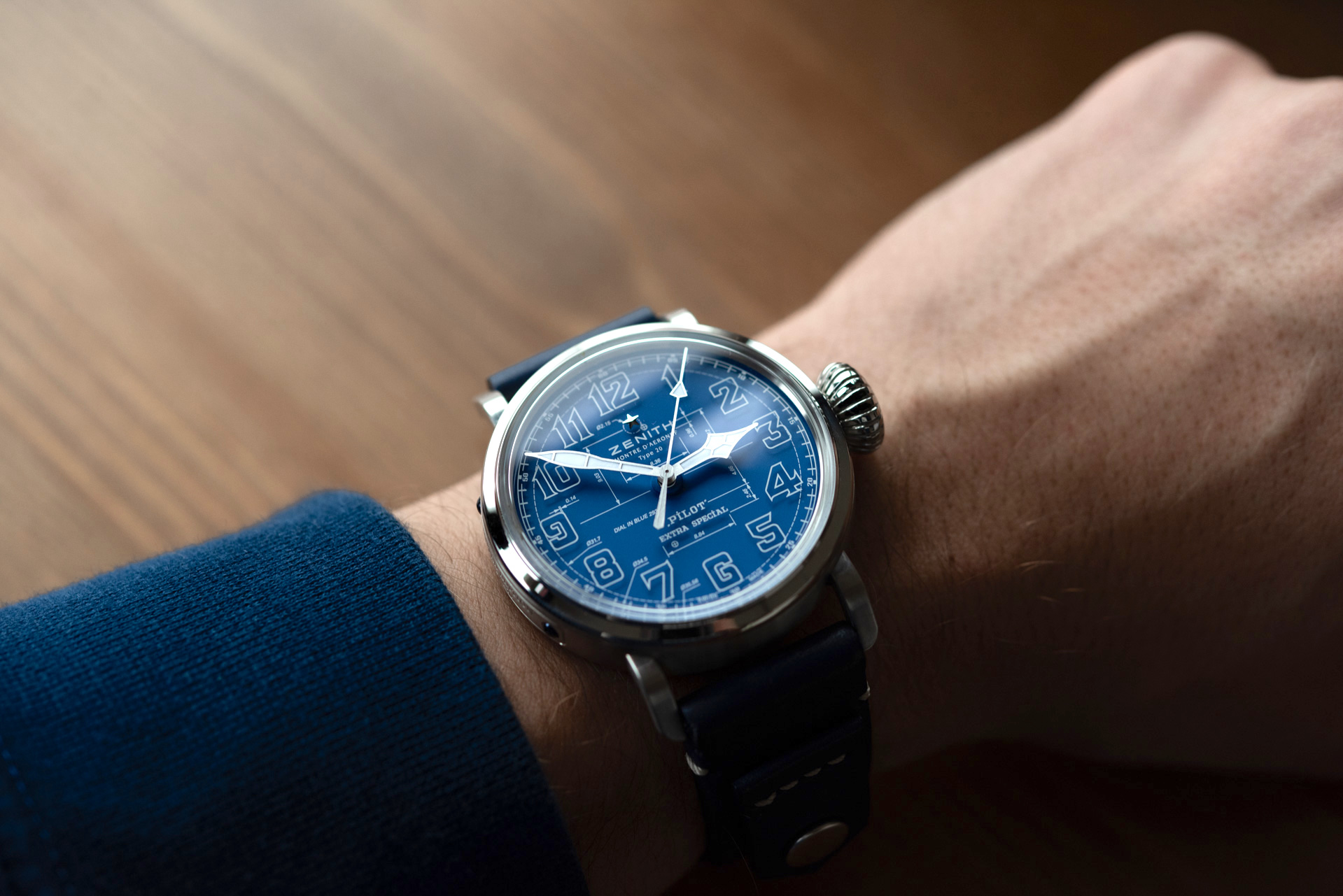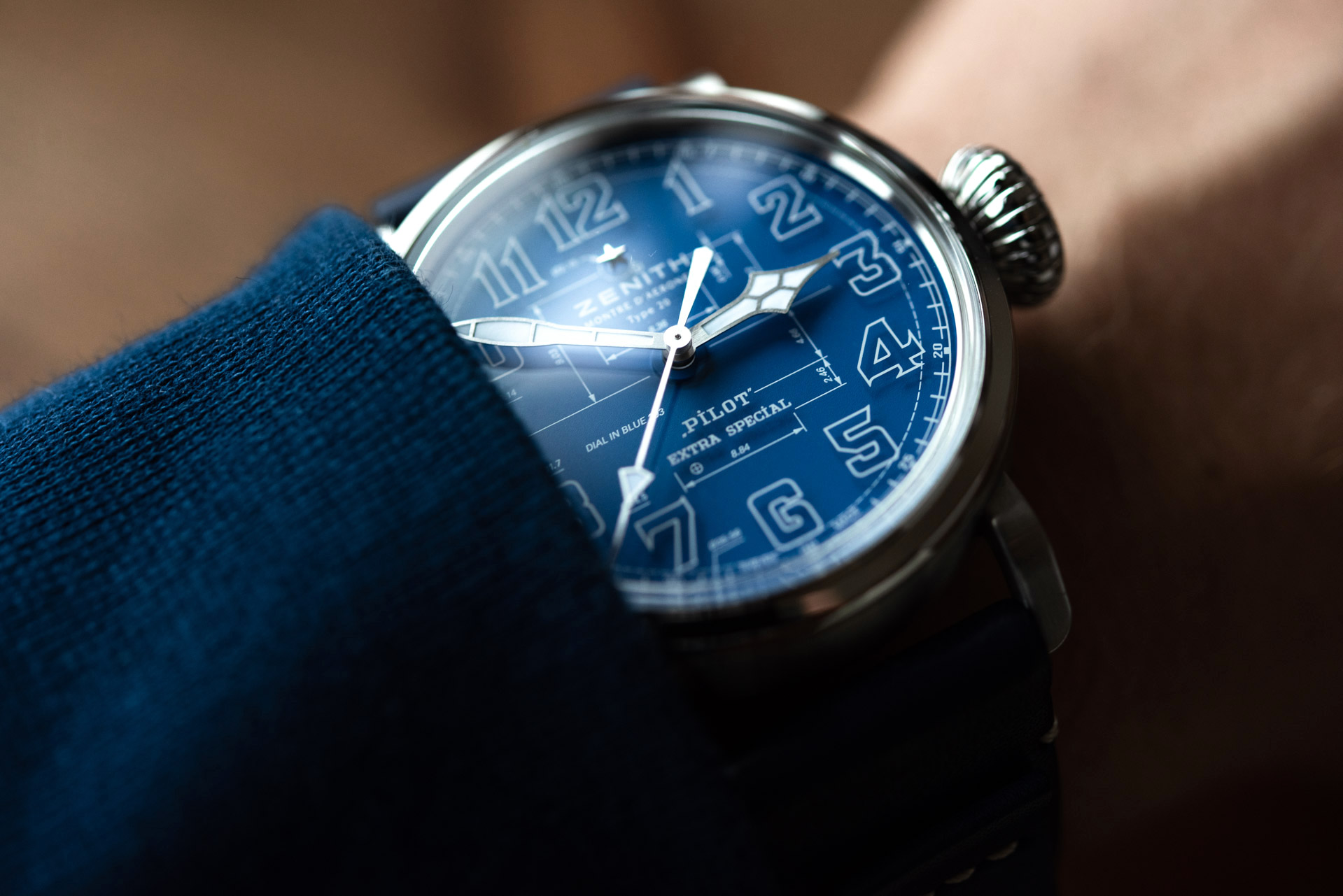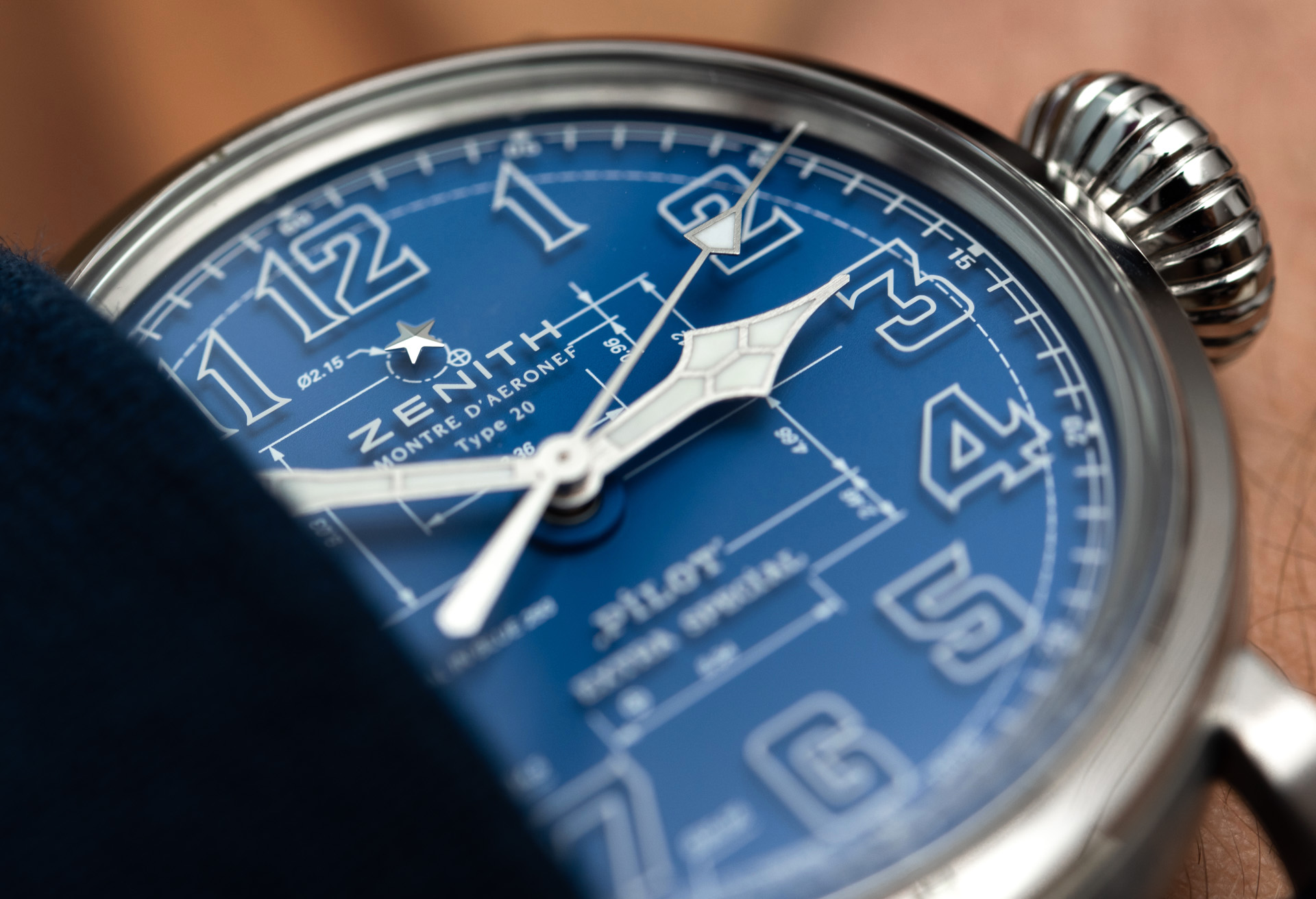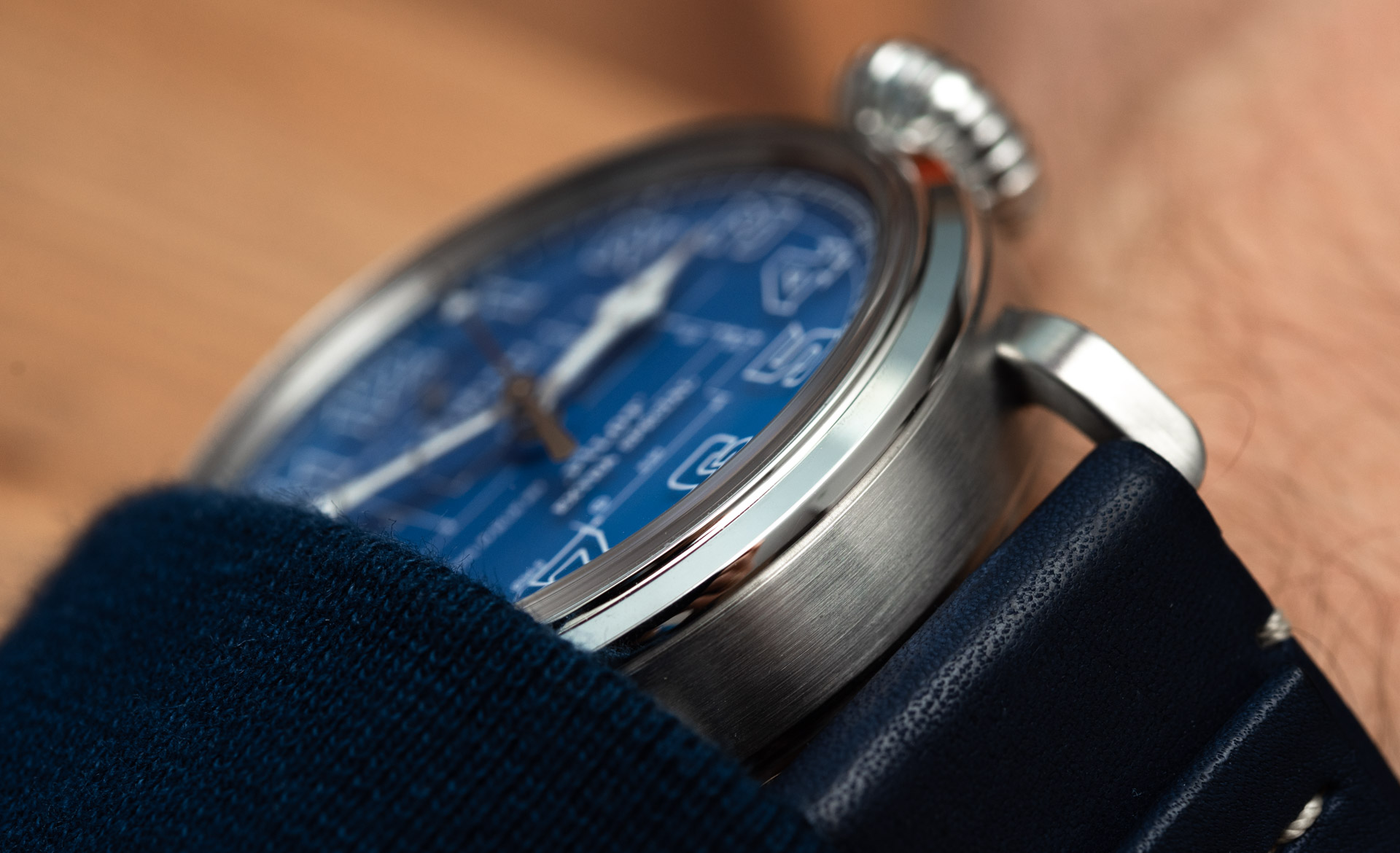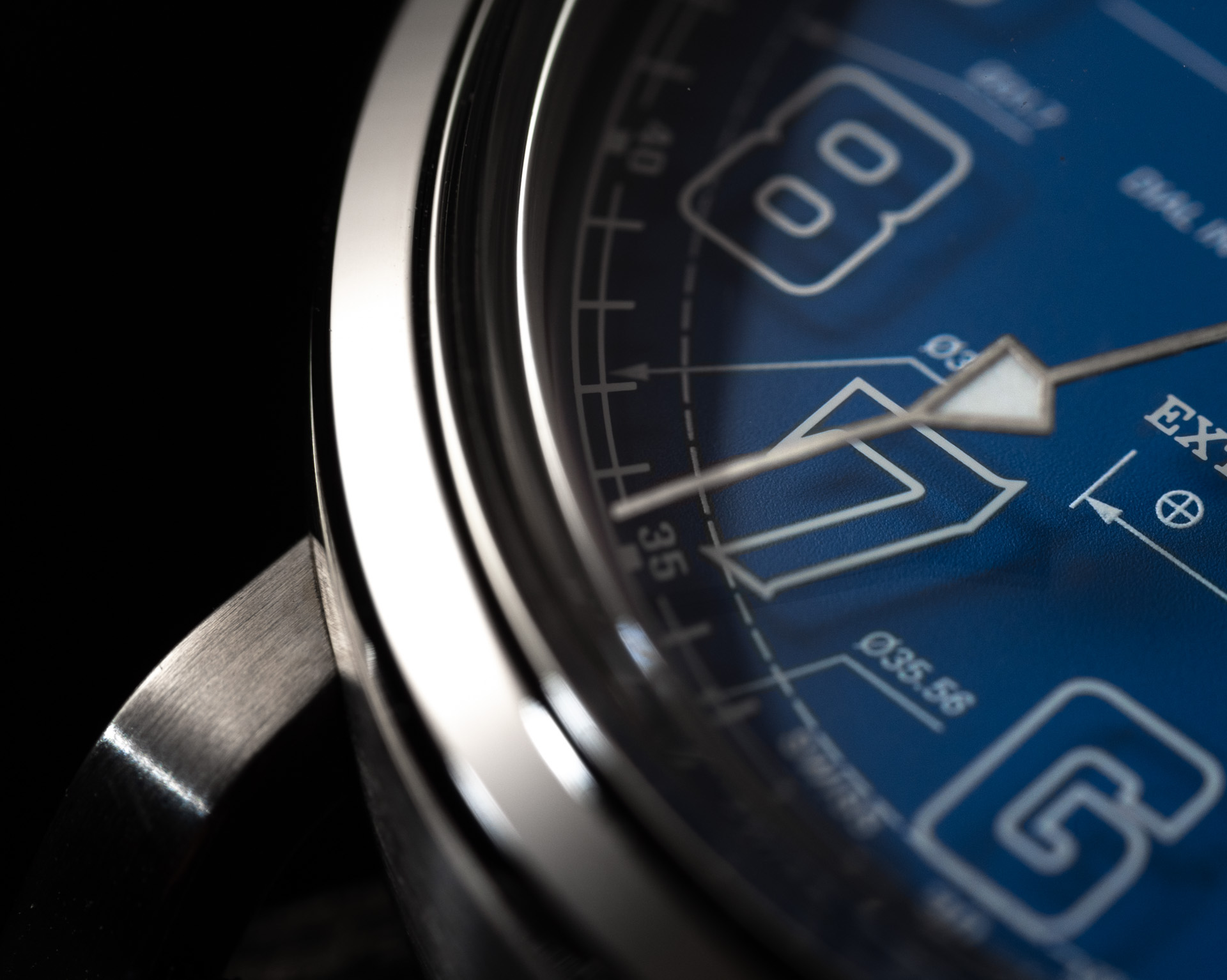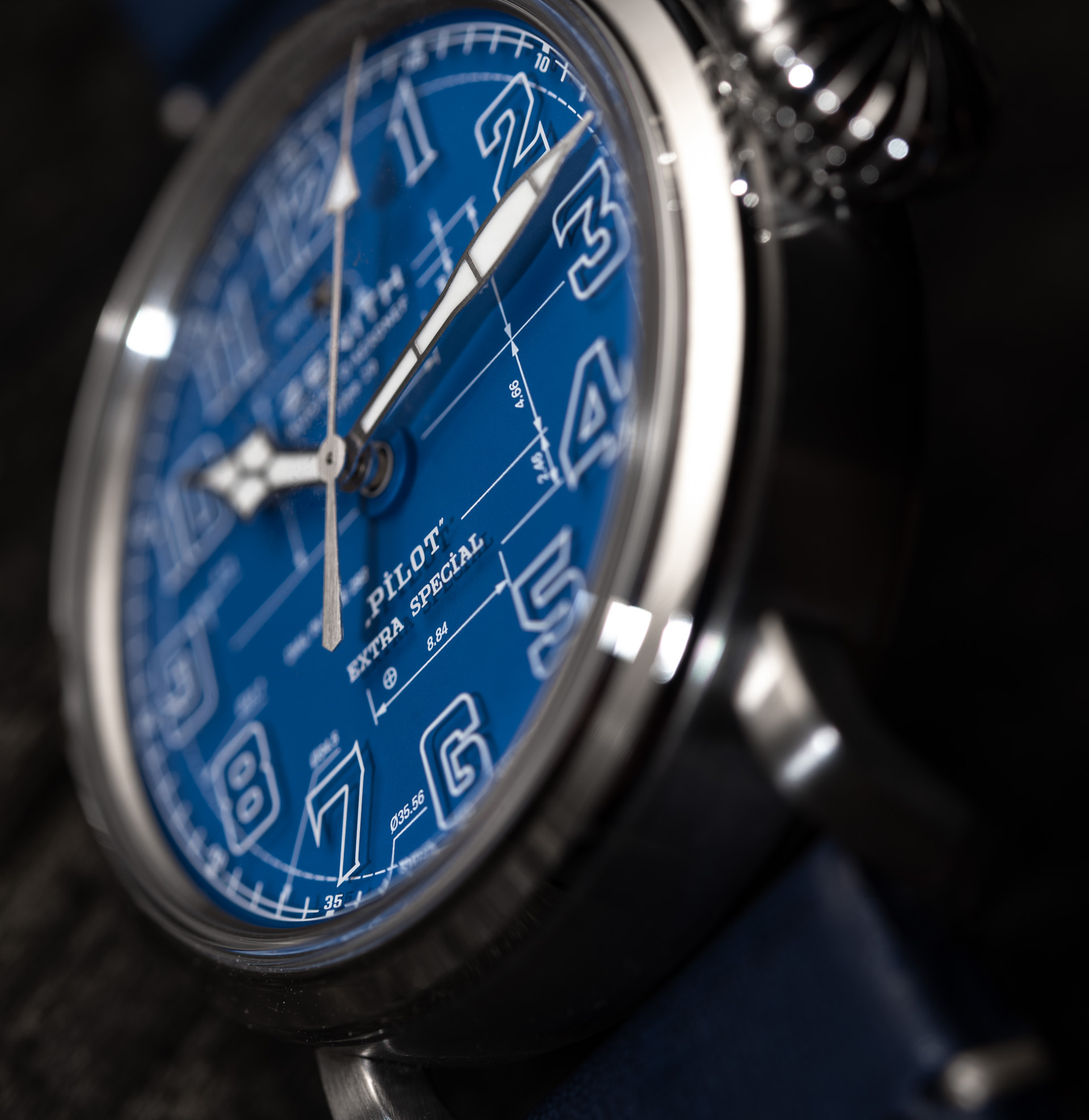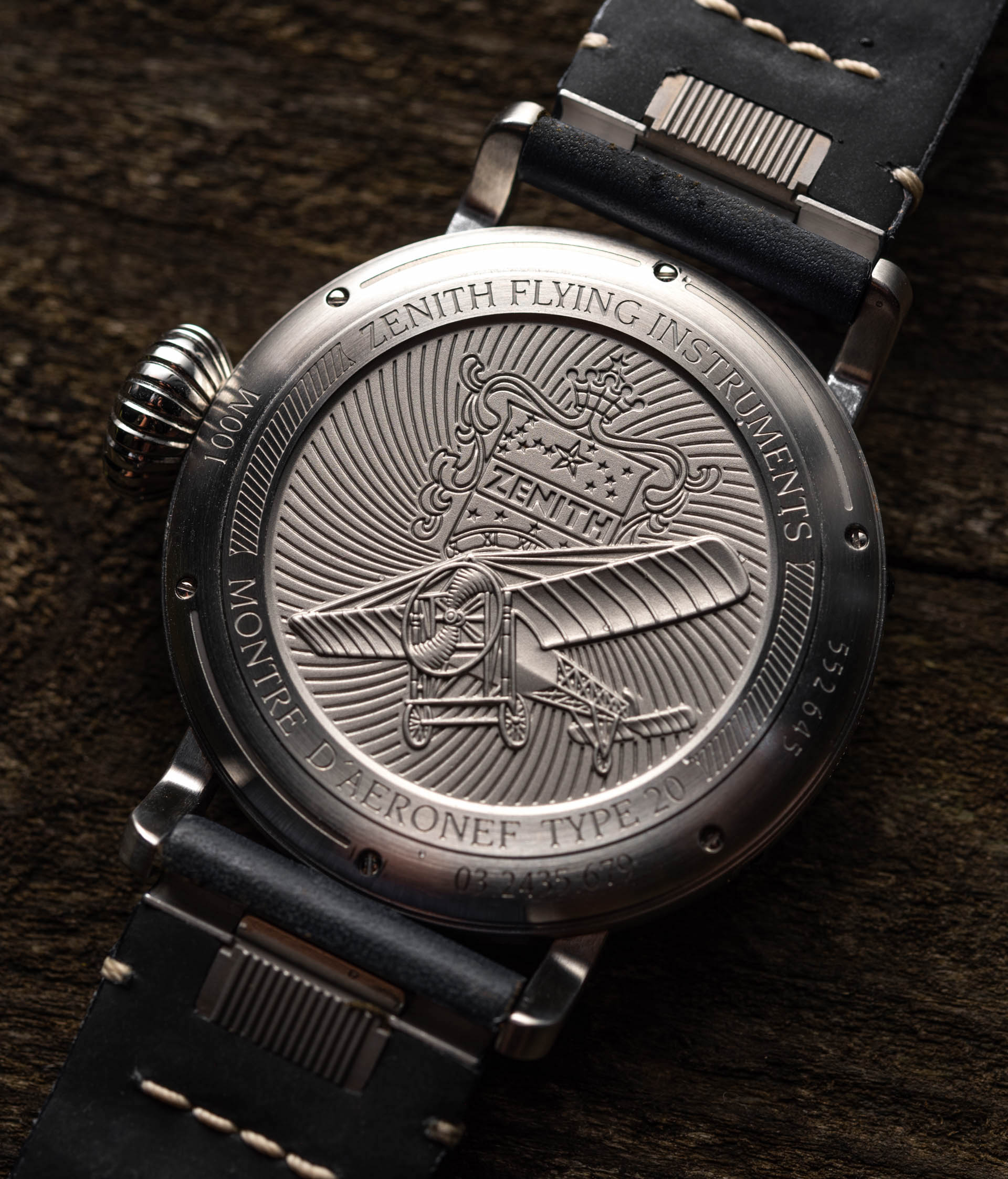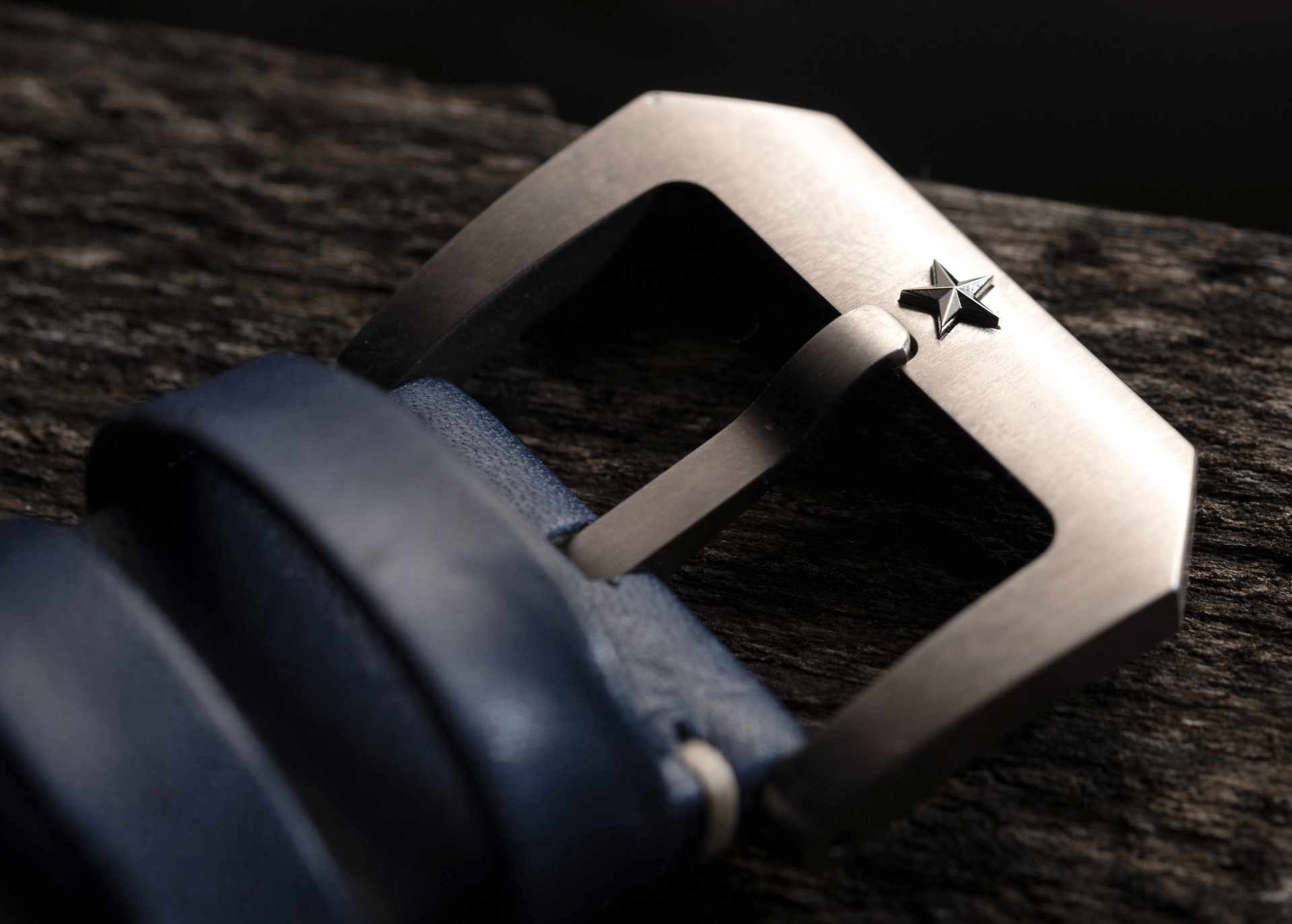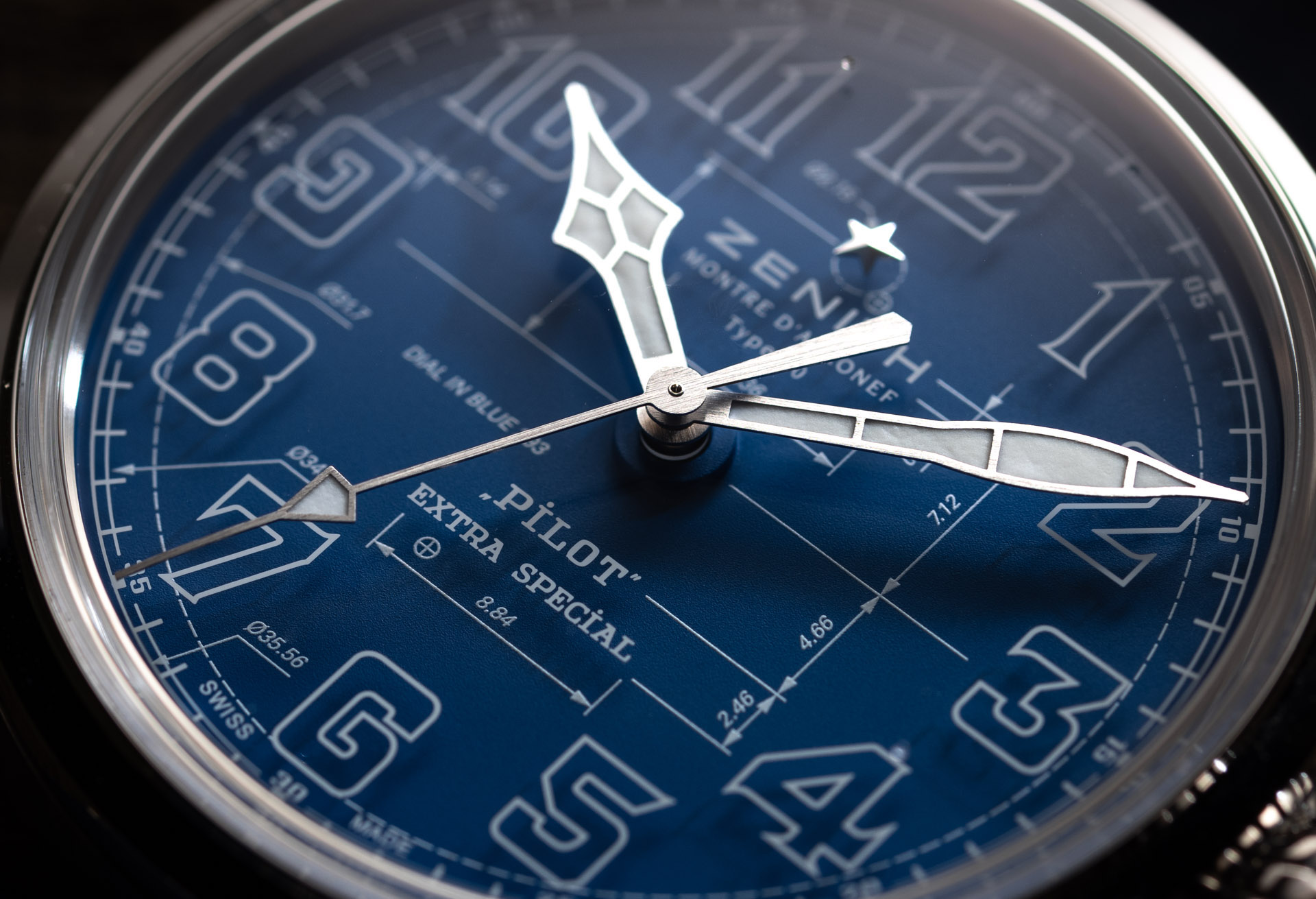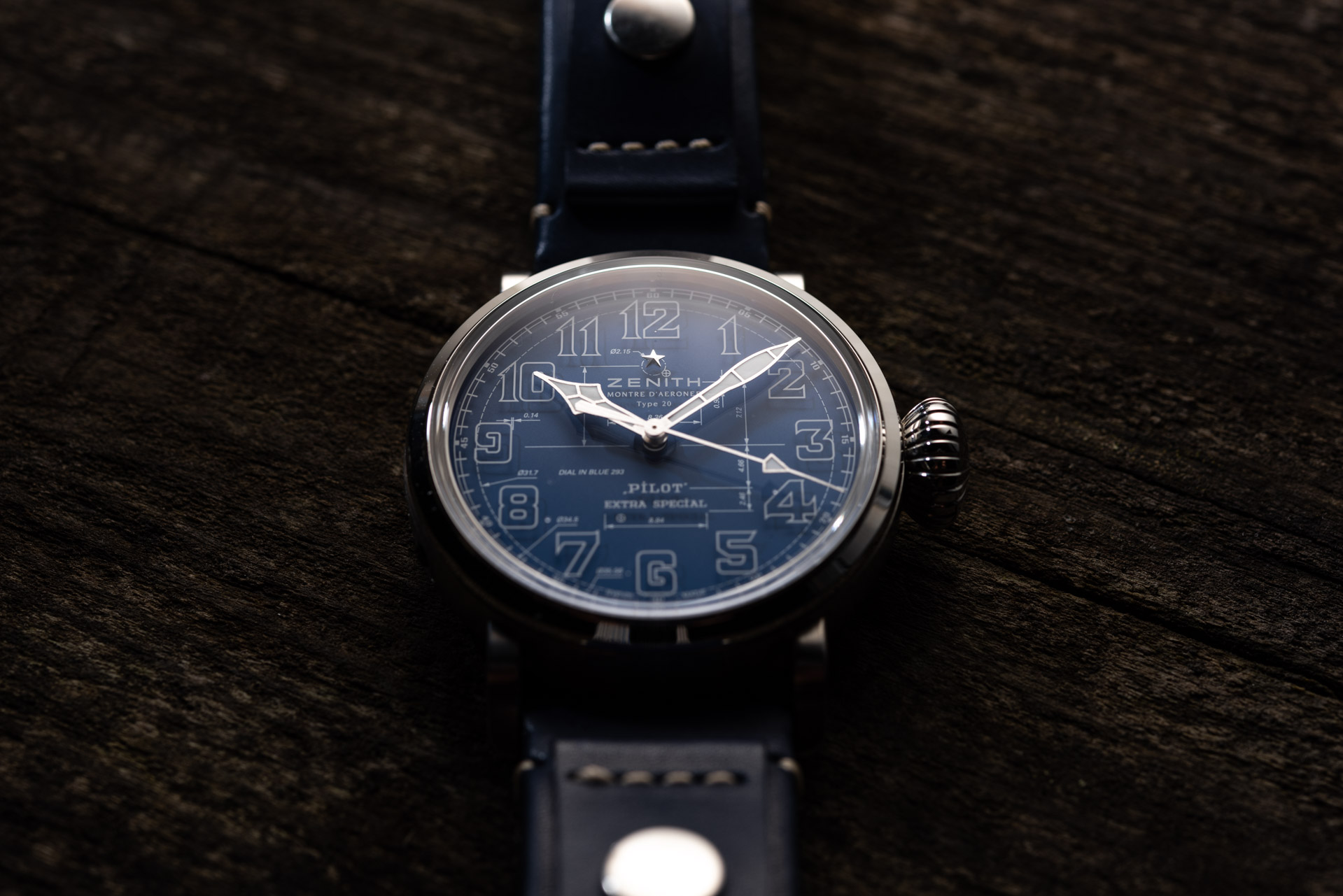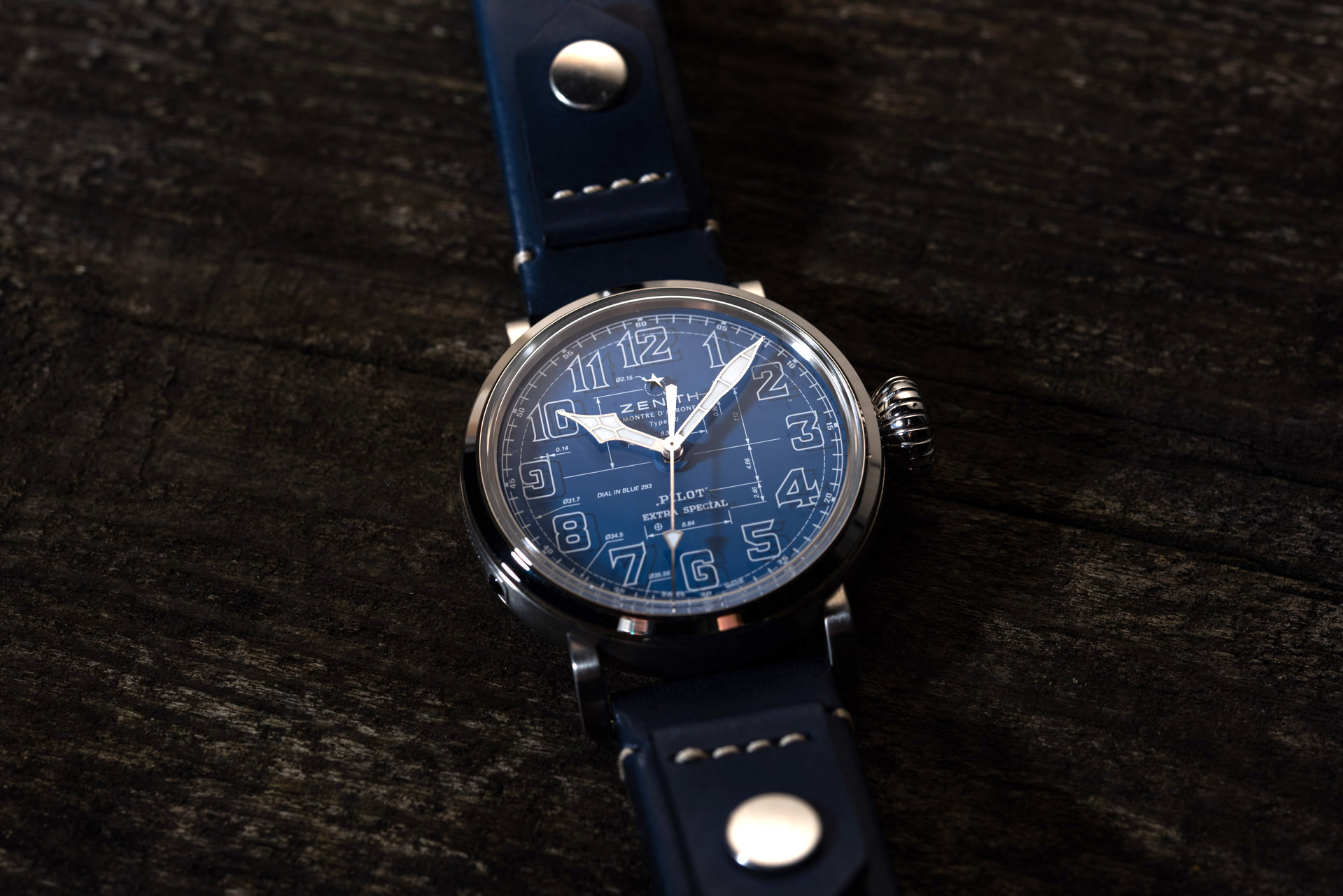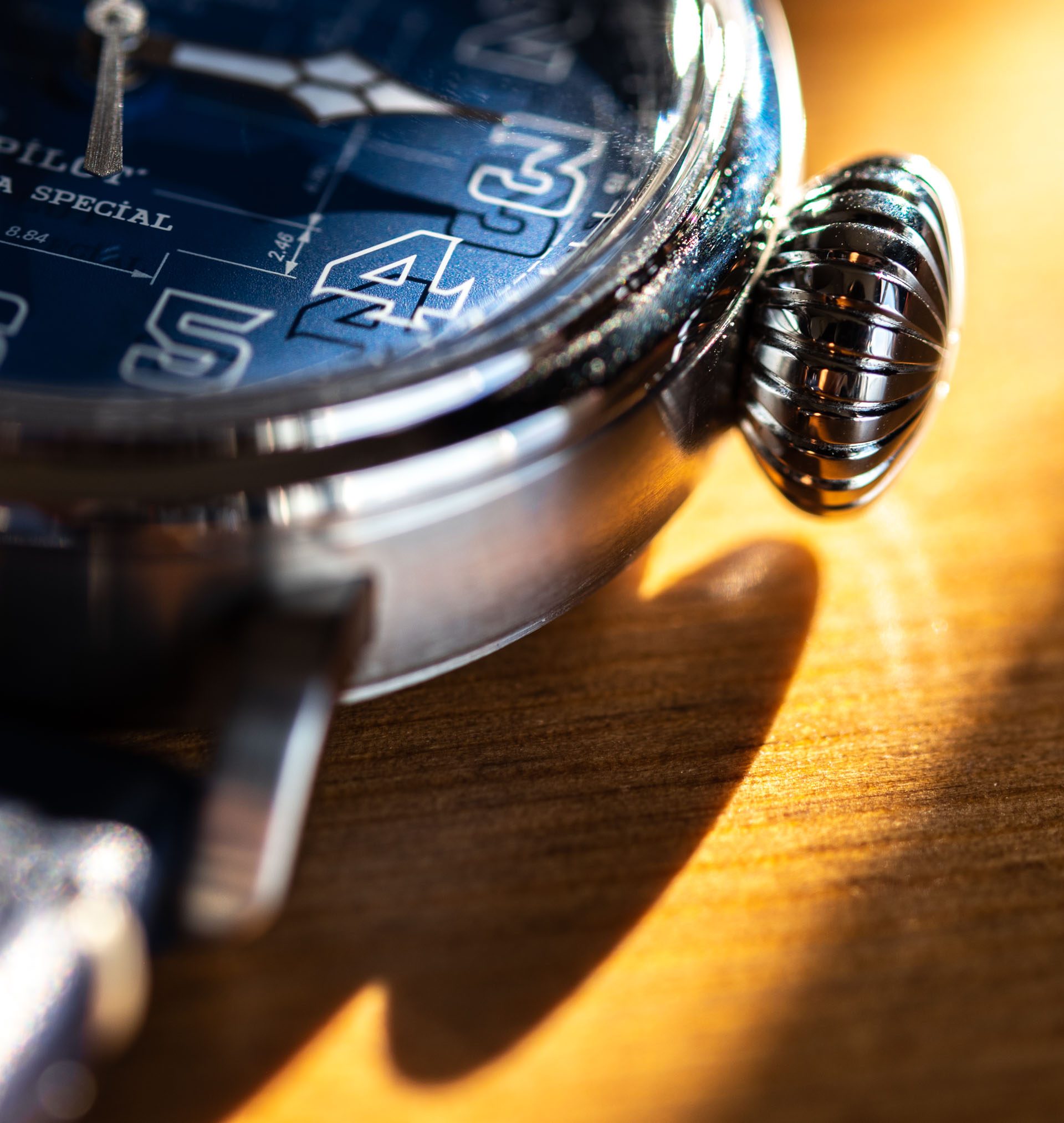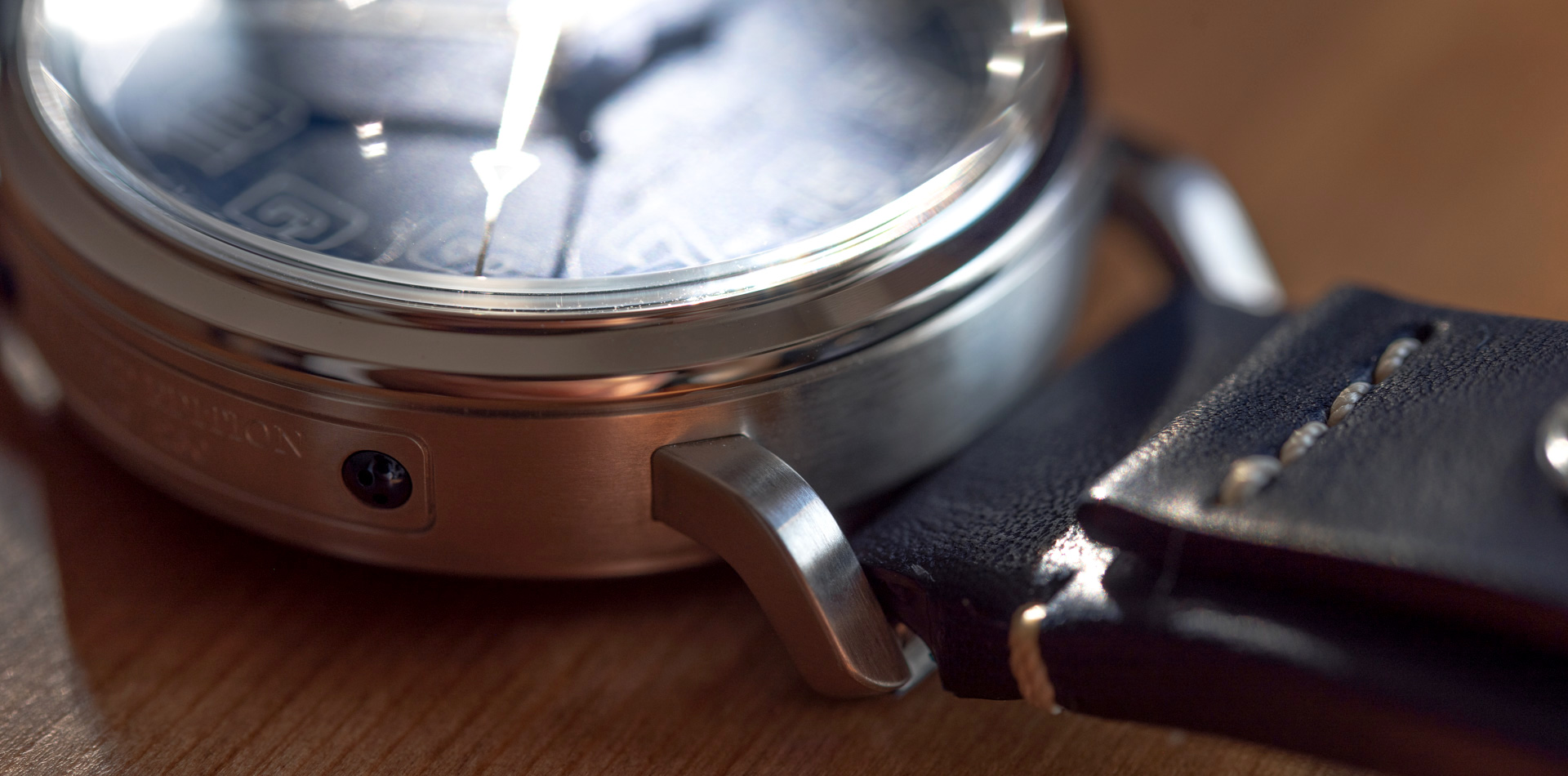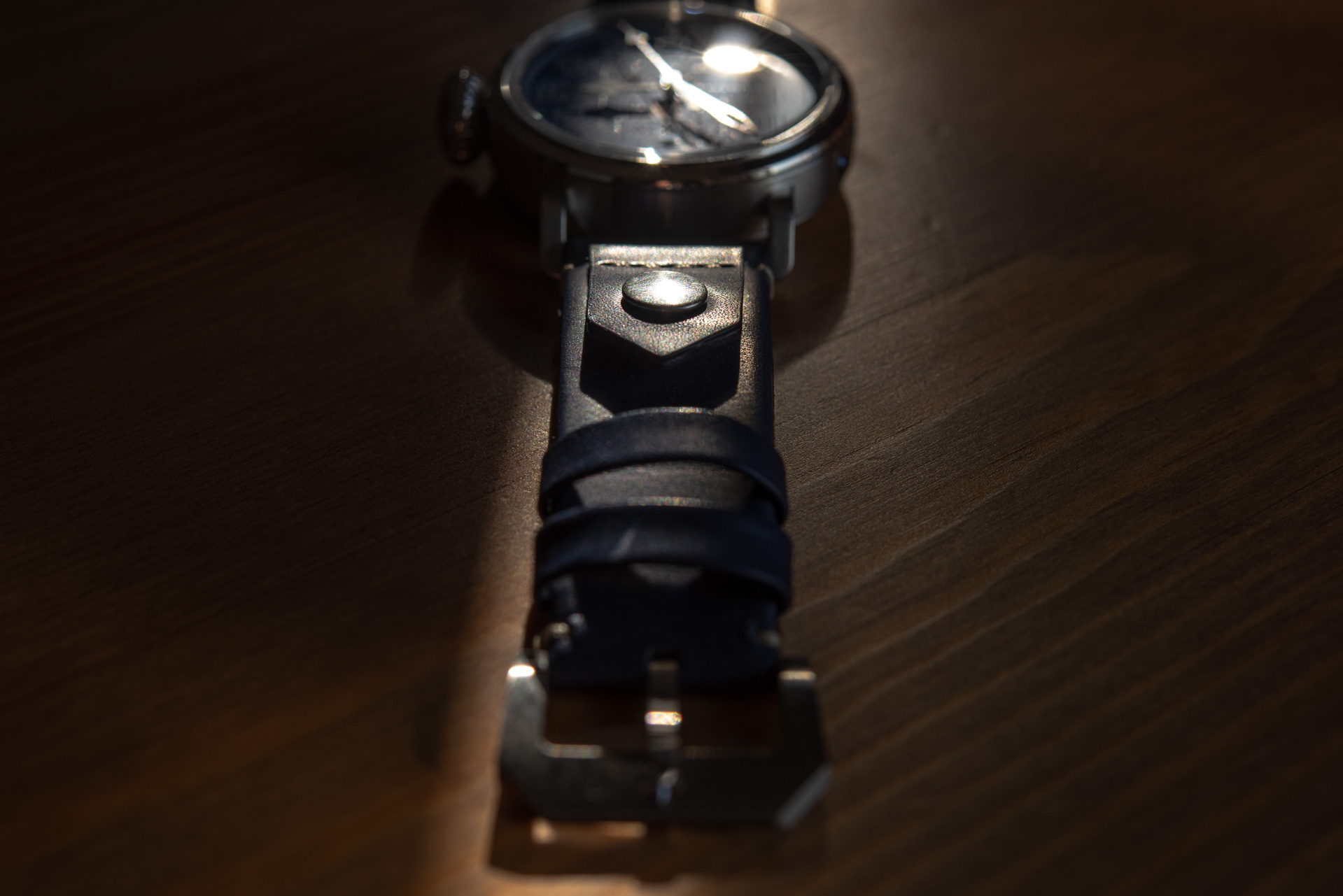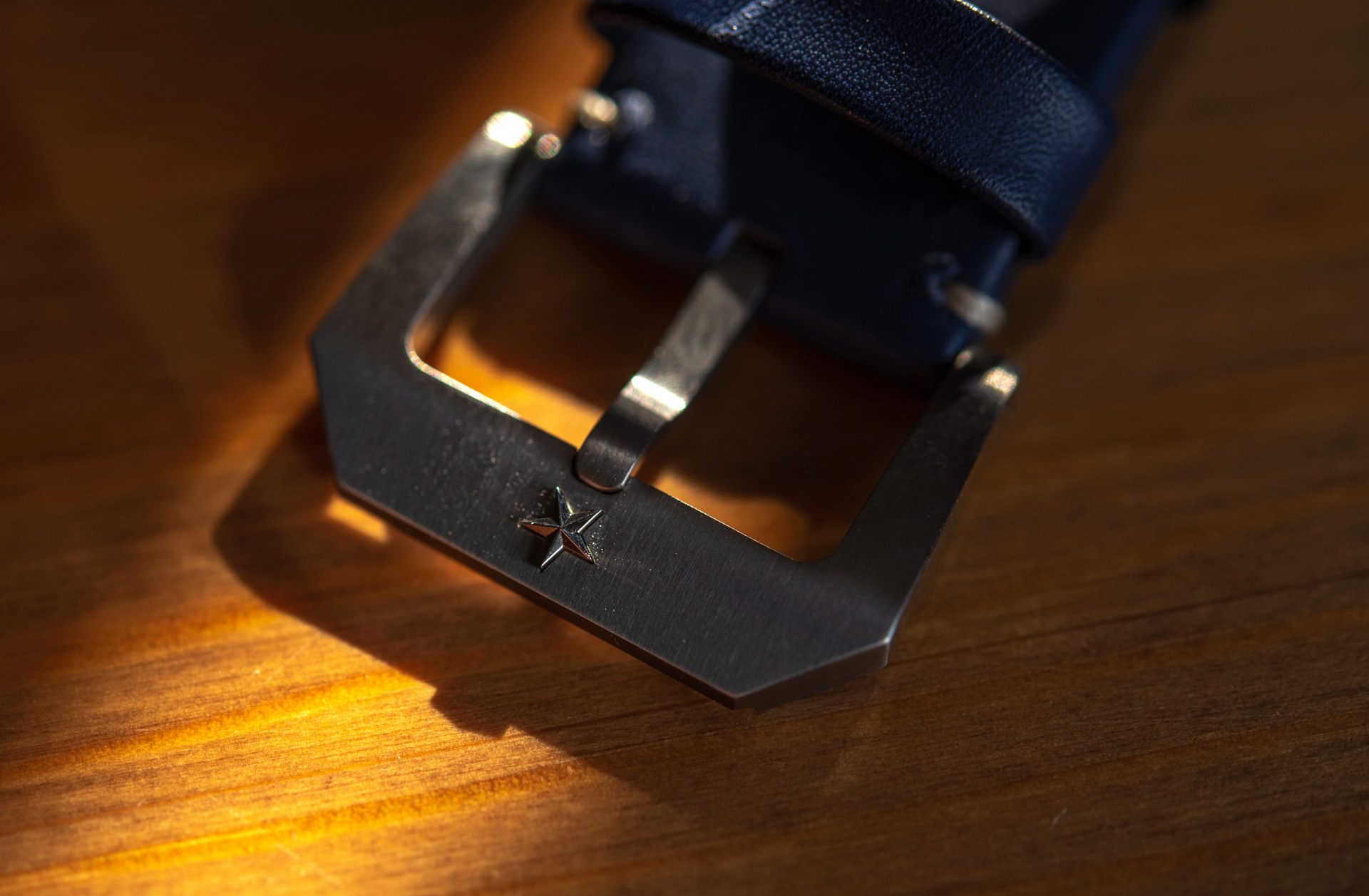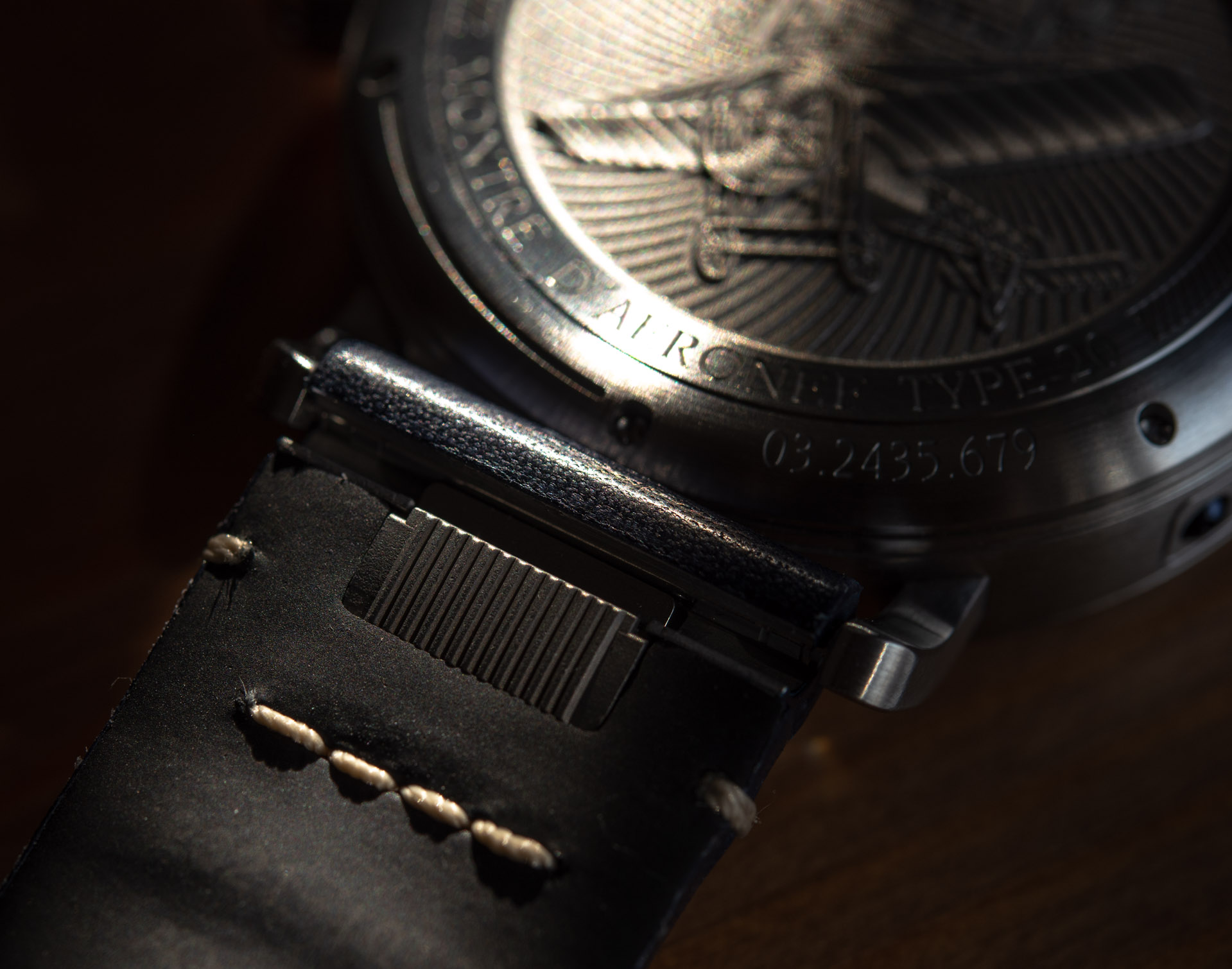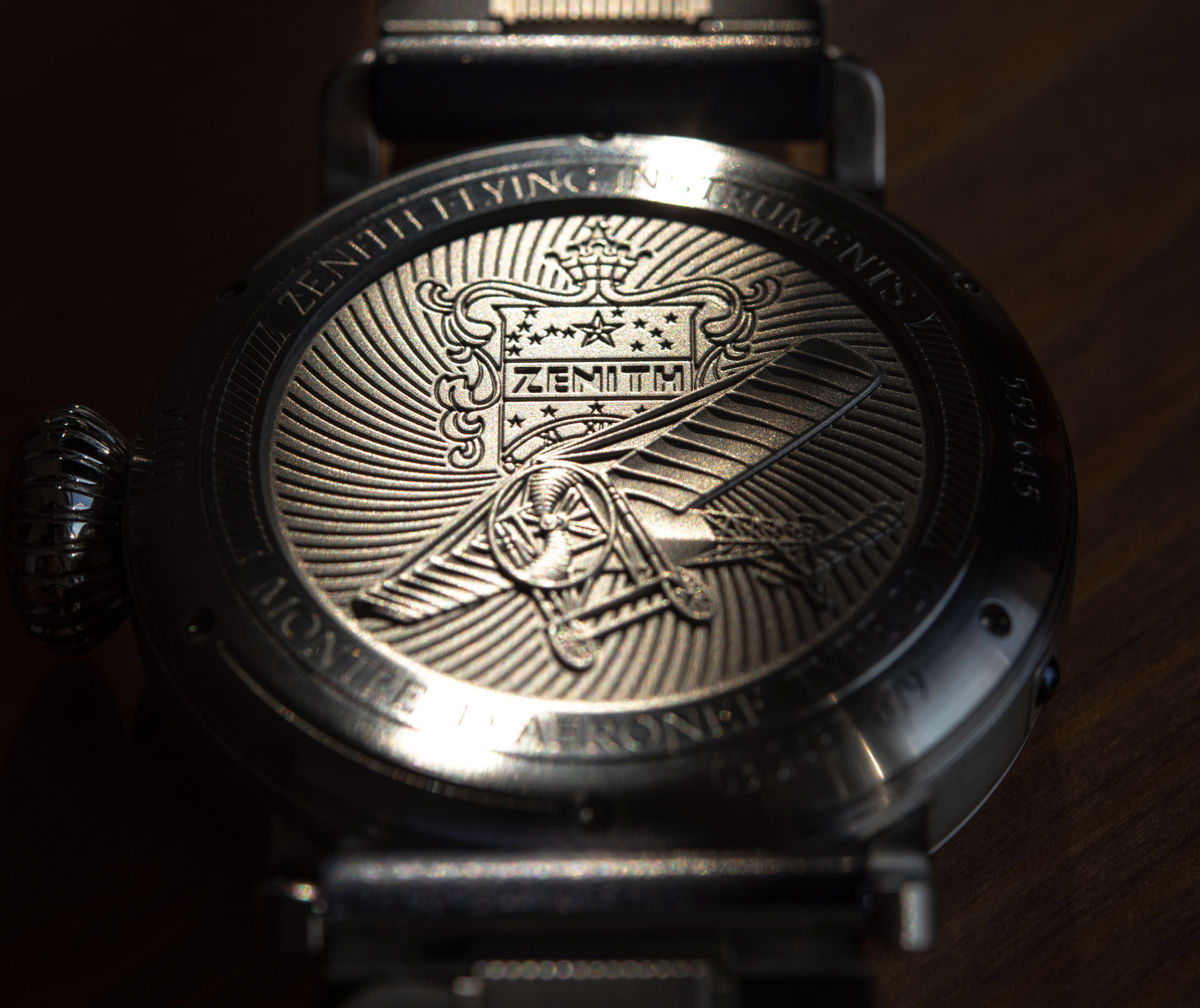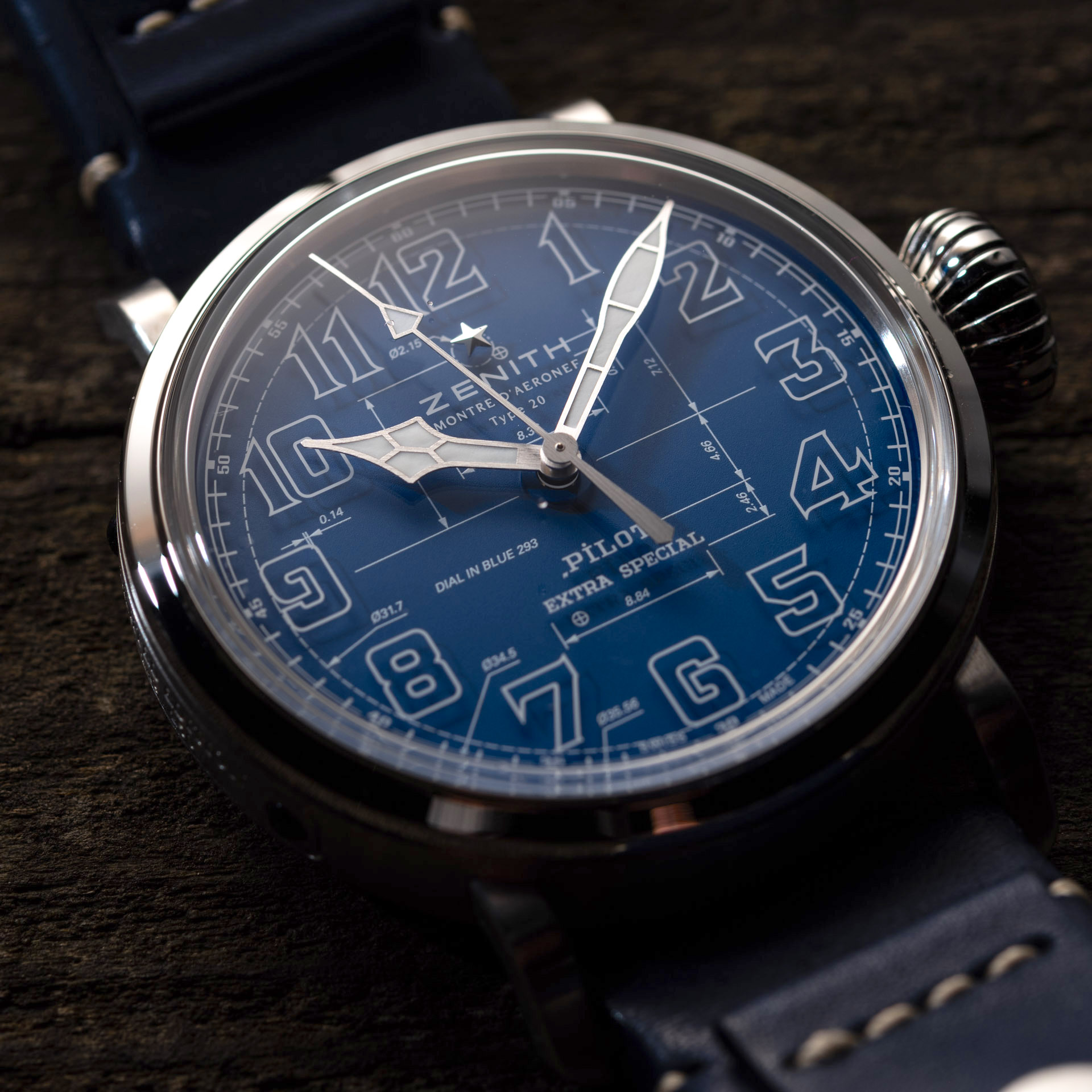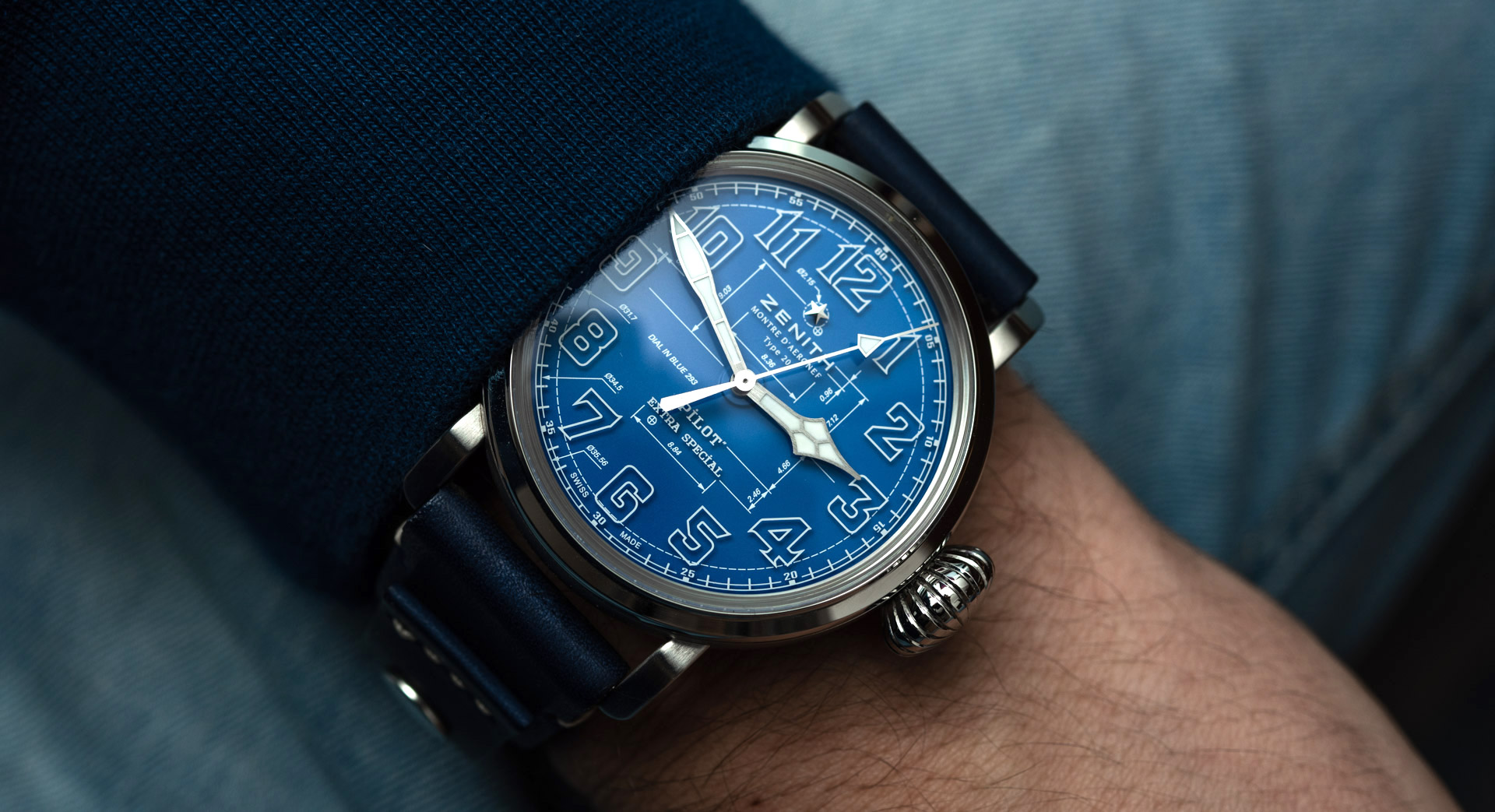
However rich in historically and technically impressive feats, recent years saw Zenith struggle at re-establishing its own identity next to its rival siblings within the LVMH group, namely TAG Heuer, Hublot, and Bulgari. The Zenith Pilot Type 20 Blueprint is a refreshing, yet historically validated, offering by the manufacture and that makes it worthy of attention. So, what sort of a wearing experience results from its early 1900s inspired looks, seldom seen dial construction, and in-house movement?
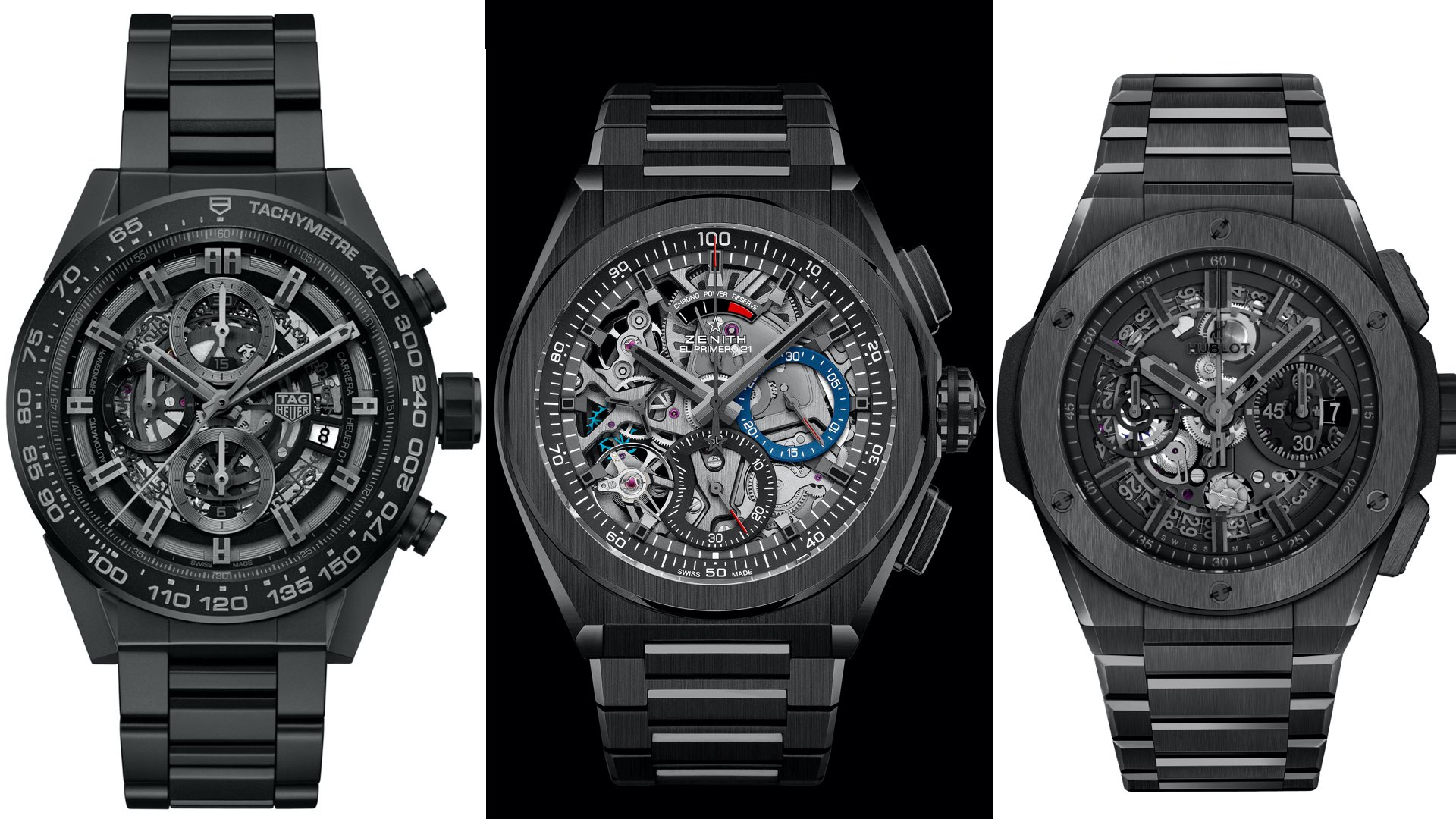
What Is Zenith, Exactly?
That’s the question the world saw the brand never really answer, not at least since the dawn of the notorious Nataf era. During Thierry Nataf’s time, Zenith produced ho-hum “classic” watches and absolutely unhinged monstrosities (that unhinged idiots like myself seem to have developed a strange affection for). The Nataf era was overruled by the arrival of Jean-Frédéric Dufour who took Zenith’s hand and directed it back to its basement where all its archives are (that would be more like the attic for Zenith, as that’s where the brand claims to have found the hidden blueprints and machines of the El Primero and other archived designs). This act resulted in the renaissance of the brand as it returned to producing rather more tasteful vintage-inspired recreations – exactly like this superb El Primero 1969 that I’m in love with up to this day.
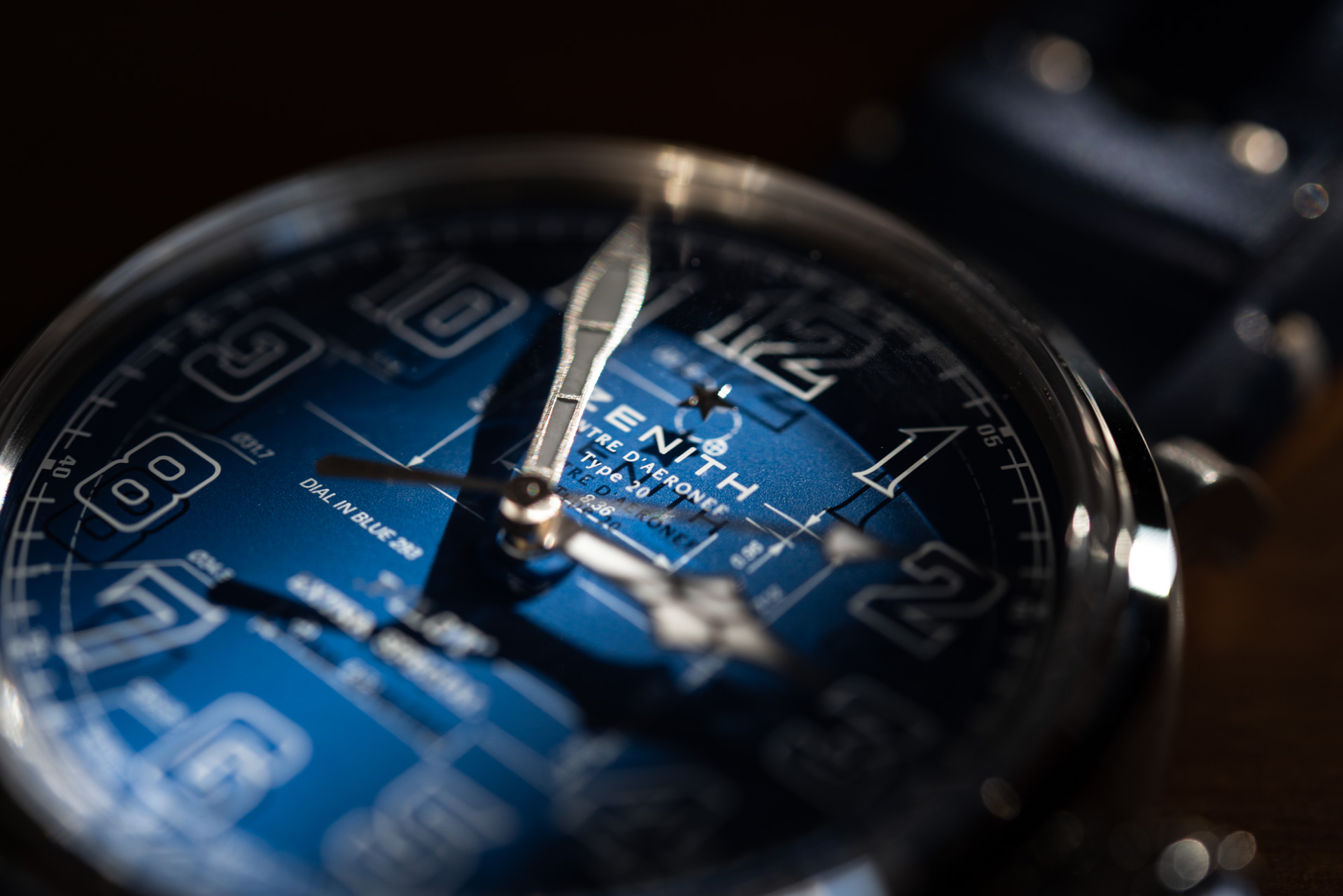
Just as the vintage craze began to run out of steam, Mr. Dufour made a neatly timed departure to Rolex – where the once media-savvy CEO has begun his strict isolation from the public in typical Rolex fashion. Since then, Zenith has increased the volatility of its very own rollercoaster ride between vintage and modern, high-tech, and simple. Its darkest hour not technically but stylistically, I reckon, came with the launch of the Defy that you see above in the center, designed in the most Biverian way possible: with a round face, integrated bracelet, angular downturned lugs and, of course, an open dial. With a movement that very much appears to have come from the skunkworks of TAG Heuer. Zenith, the name synonymous with the El Primero and characterized by its own peculiar designs, borrowed both the inside as well as the outside of its hot new model from its “in-house” siblings of fellow LVMH brands.
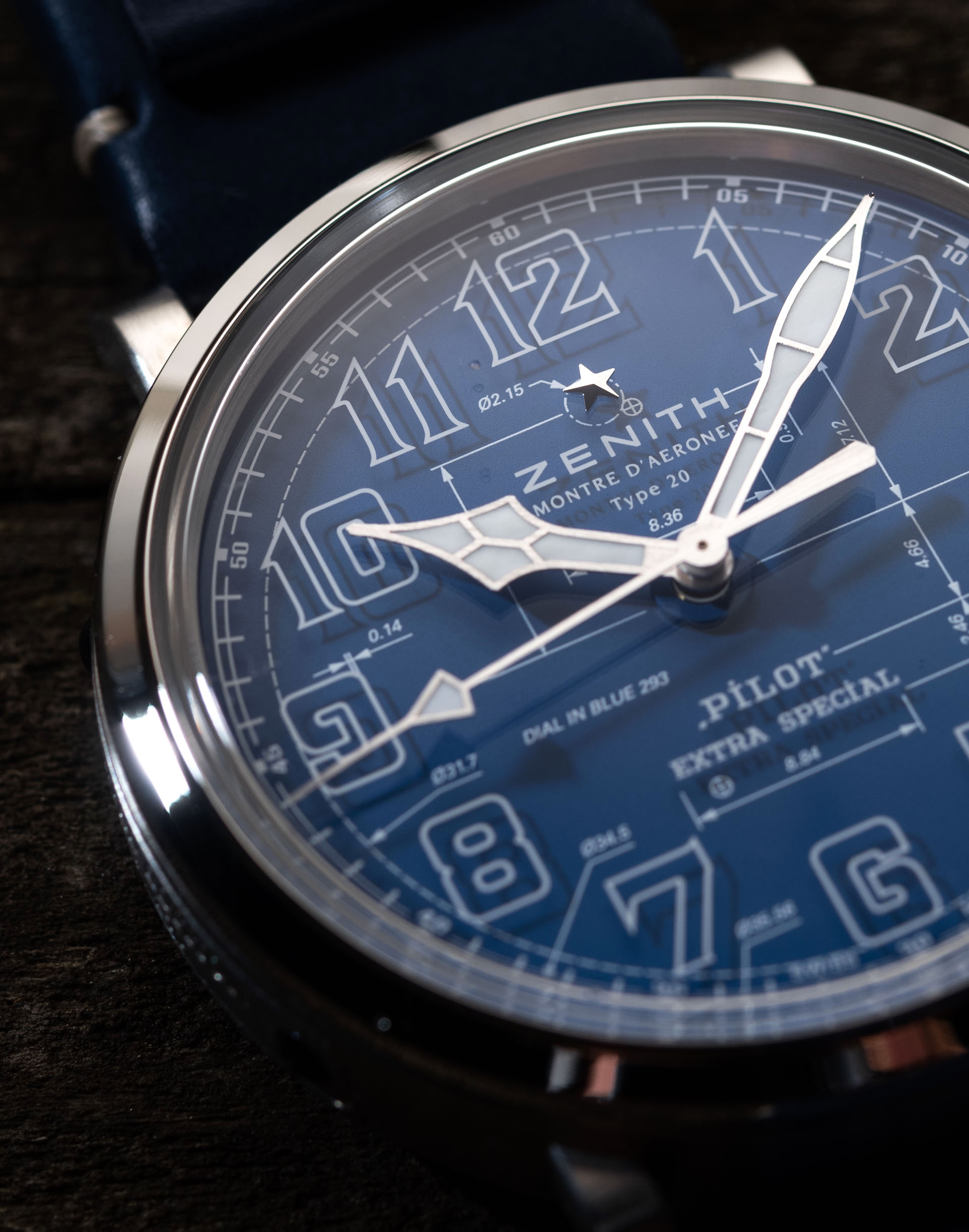
So, what is Zenith exactly? It’s a 155-year-old manufacture that was a manufacture before it was cool to be a manufacture. It’s a brand that was an active participant of the early days of aviation, a brand that mastered the high-frequency integrated chronograph, and a brand that literally cheated on itself by first ordering it to destroy the El Primero and then literally saving it from itself. It’s a brand that endured Thierry flippin’ Nataf as its CEO — who, to his credit, created some impressively bonkers watches that no big-group watch brand CEO would dare do today. In essence, Zenith is a beautifully quirky and historically important manufacture, exactly the sort that shouldn’t be forced to copy the homework of others.
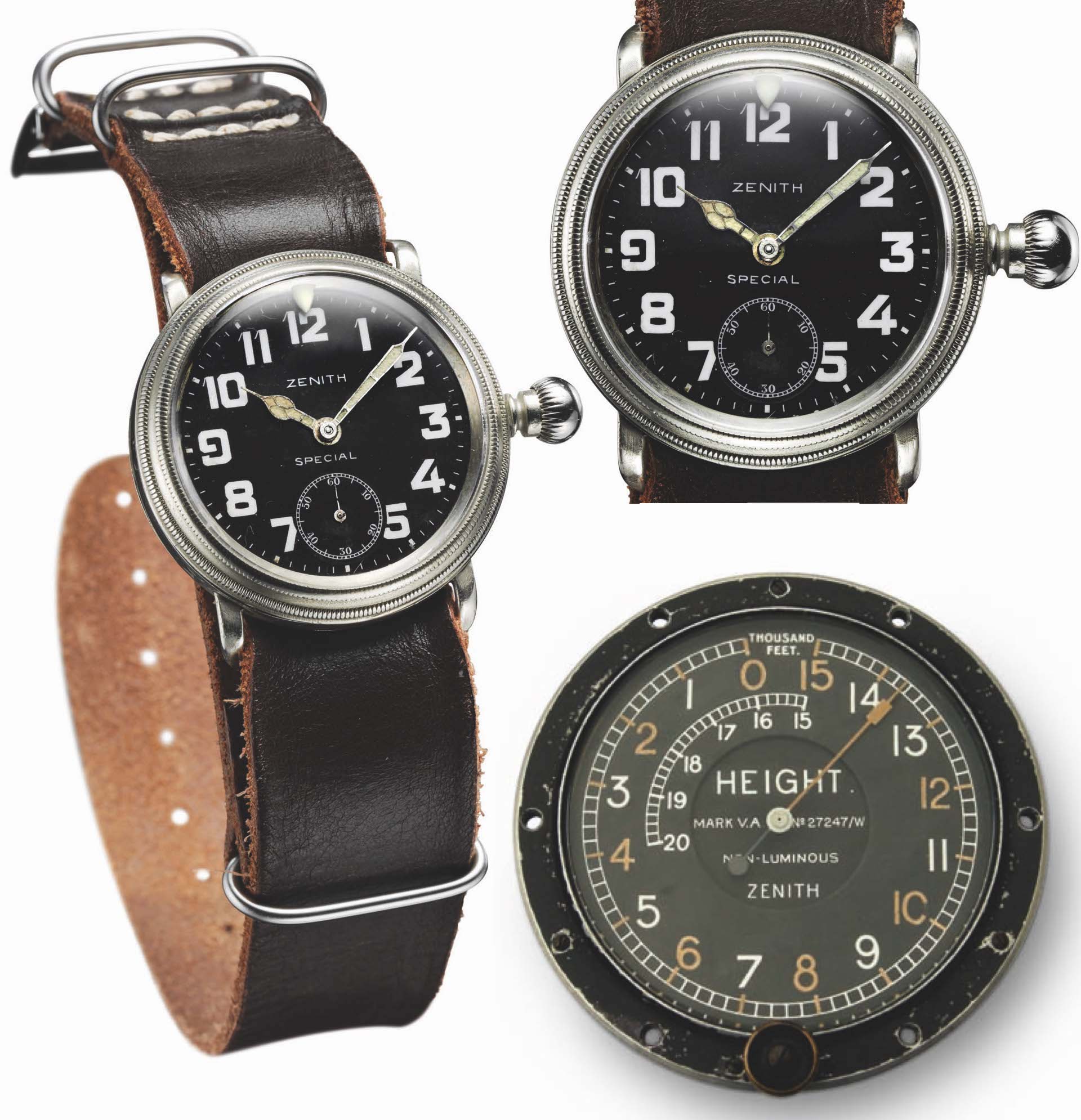
From The Dawn Of Aviation
And that very point brings us to the Zenith Pilot Type 20 Blueprint. As I said, Zenith has a legitimate claim to the pilot watch, so much so that Jean-Frédéric Dufour said Zenith ended up owning the term “PILOT” for watches. A fun game for watch nerds: Name another pilot’s watch with Pilot spelled out on the dial. One well and truly had to be early in the game to reserve that now-ubiquitous term. Zenith has made the claim to have created the very first altimeter for planes and, more to the point, has equipped Louis Blériot with a Zenith pilot watch to wear on his flights, including the first-ever successful aerial crossing of the English Channel in 1909. One of Louis Blériot’s personal Zenith pilot wristwatches can be seen above. You see, he only got “Special” on the dial – what’s that compared to the “Extra Special” we get on our Montre D’Aeronef, huh?
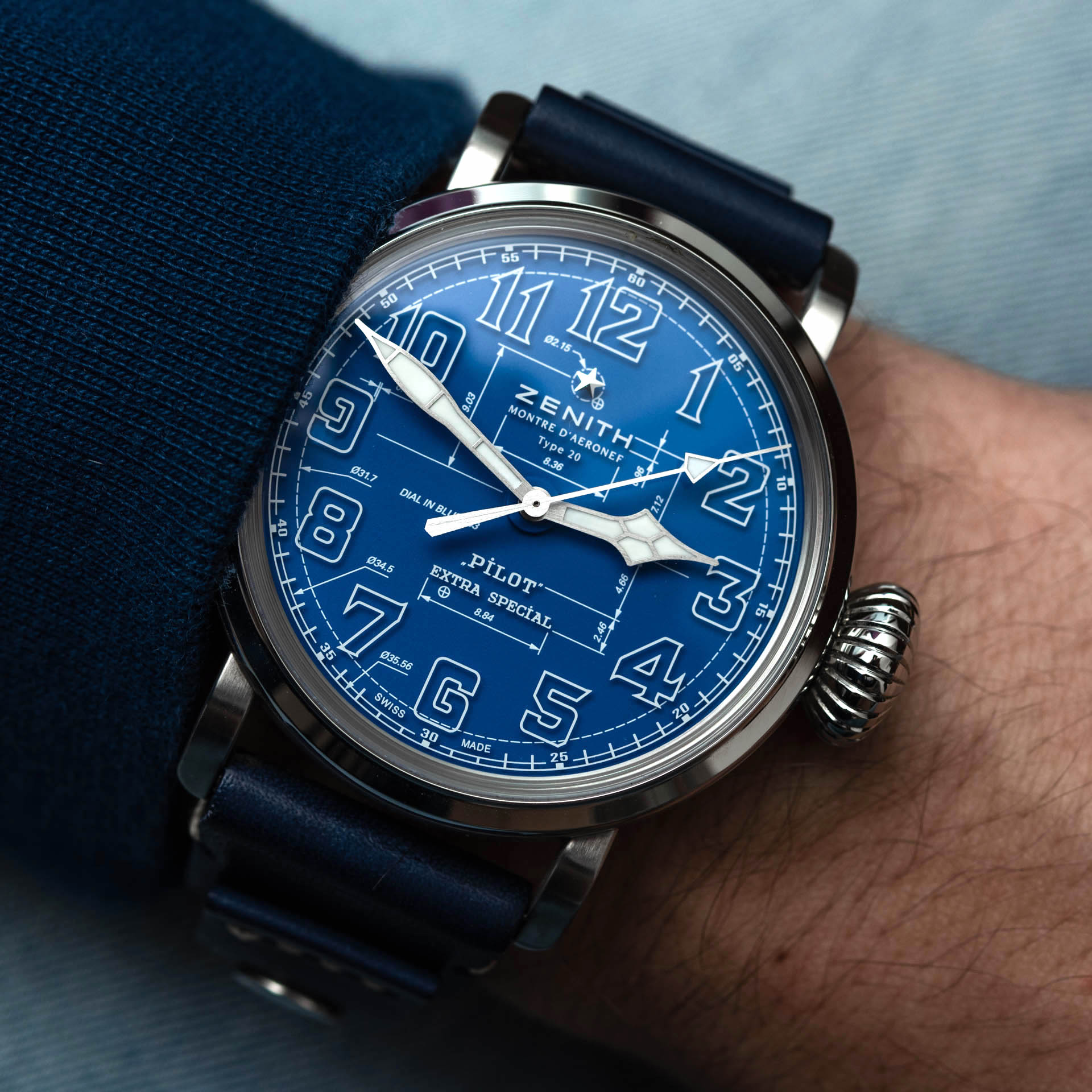
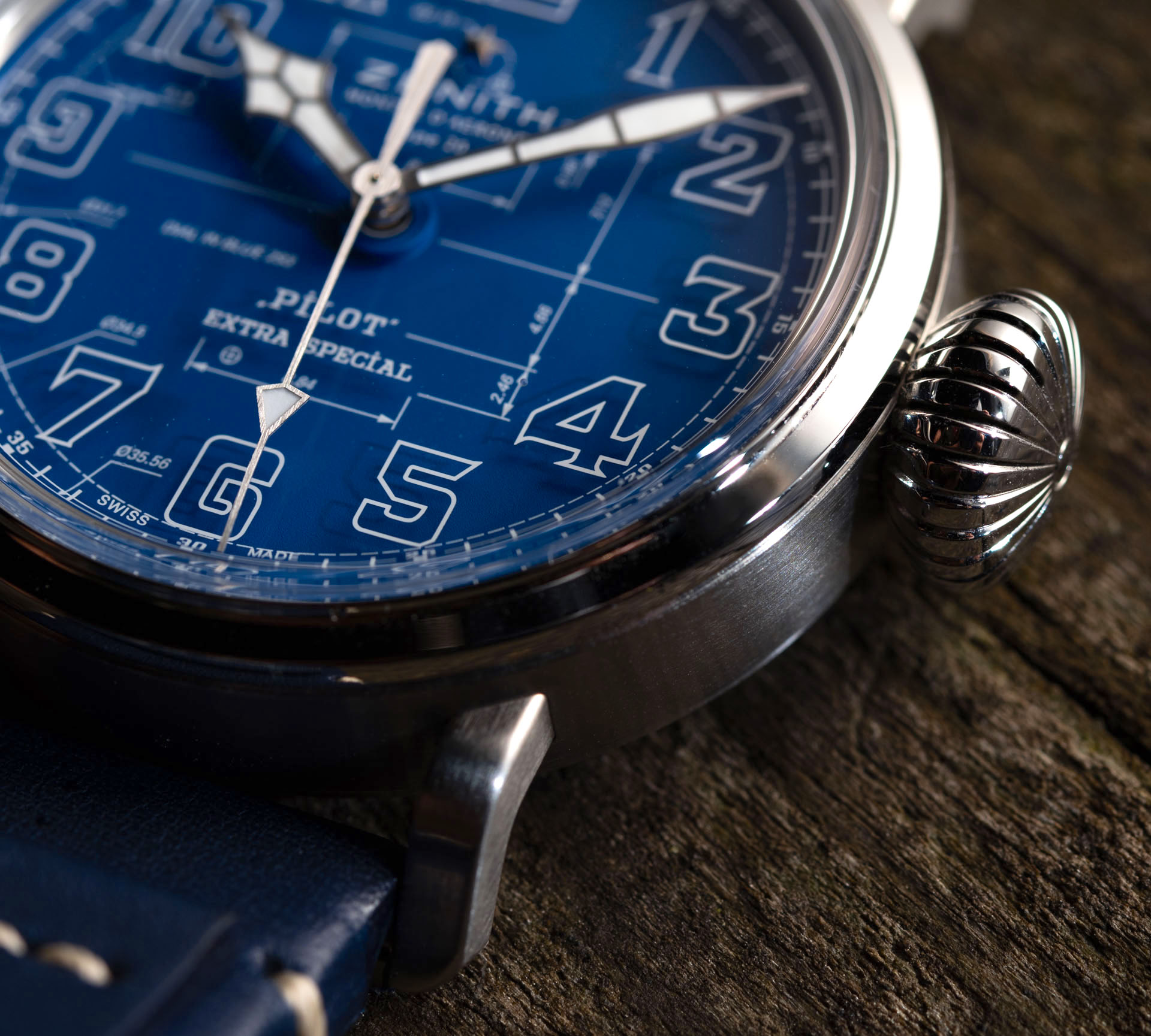
Montre D’Aeronef actually refers to clocks Zenith produced as dashboard instruments and indeed the Zenith Pilot Type 20 Blueprint has its indices styled after those dashboard clocks as opposed to what can be seen on Blériot’s watch. Either way, it’s a legit Zenith typeface from around a century ago. Another, albeit much more common pilot’s watch trademark, is the massive onion crown, thrown into the mix to make setting and winding the watch easier when wearing gloves. For a while I thought this was a bit of an eye-roll-inducing thing, I mean, who would be winding their watch when being flown through the air by a bit of scaffolding and linen? (because yes, it wasn’t canvas but linen that was generally used in the construction of early planes) Then I realized, most all pre-flight duties, checks, preparations, maintenance work, and repairs would be carried out while wearing gloves anyway – and so airmen would likely be adjusting and winding their watches with gloves on, too, even if they were still on the ground. So, onion crowns, they get a pass from me.
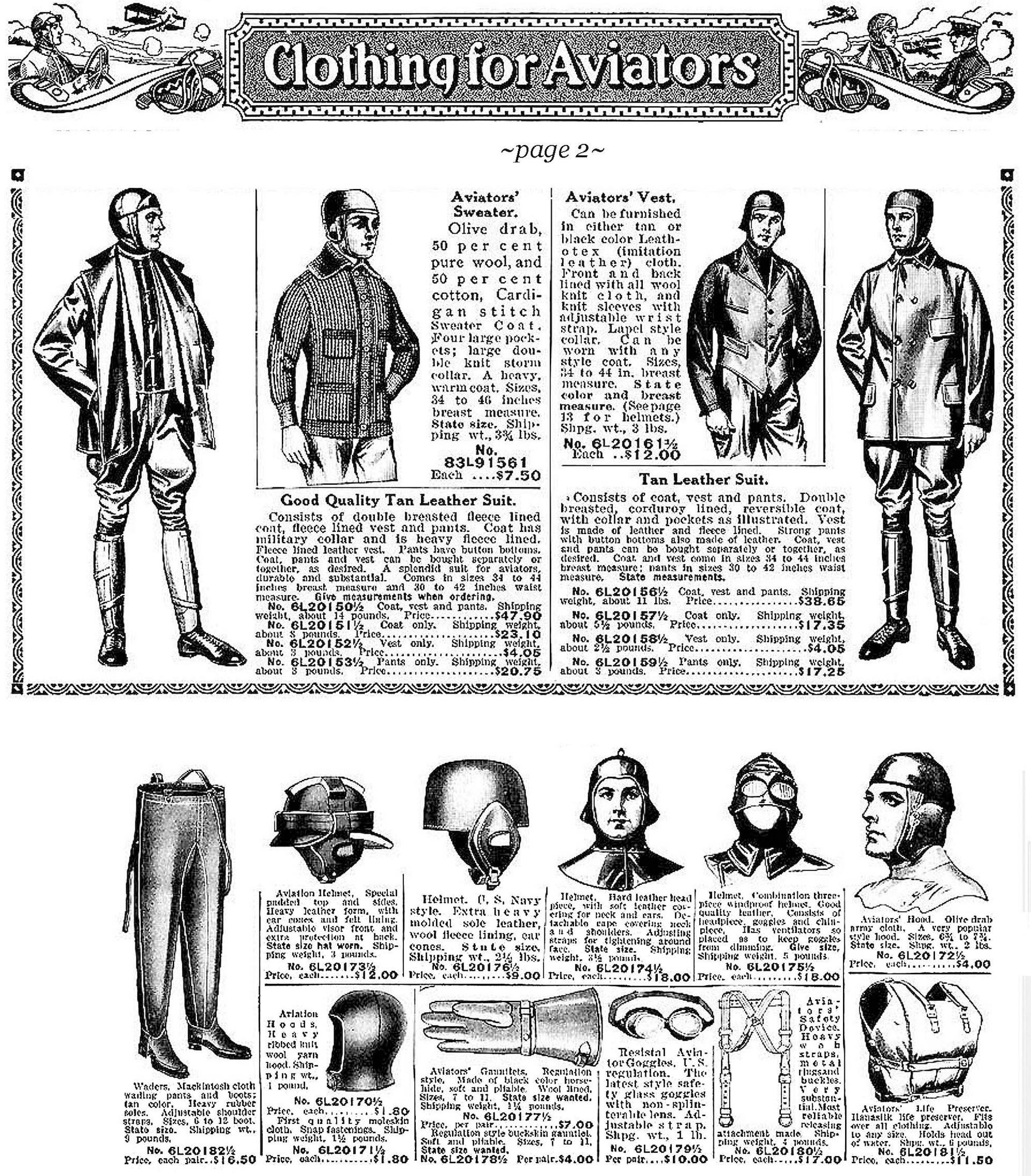
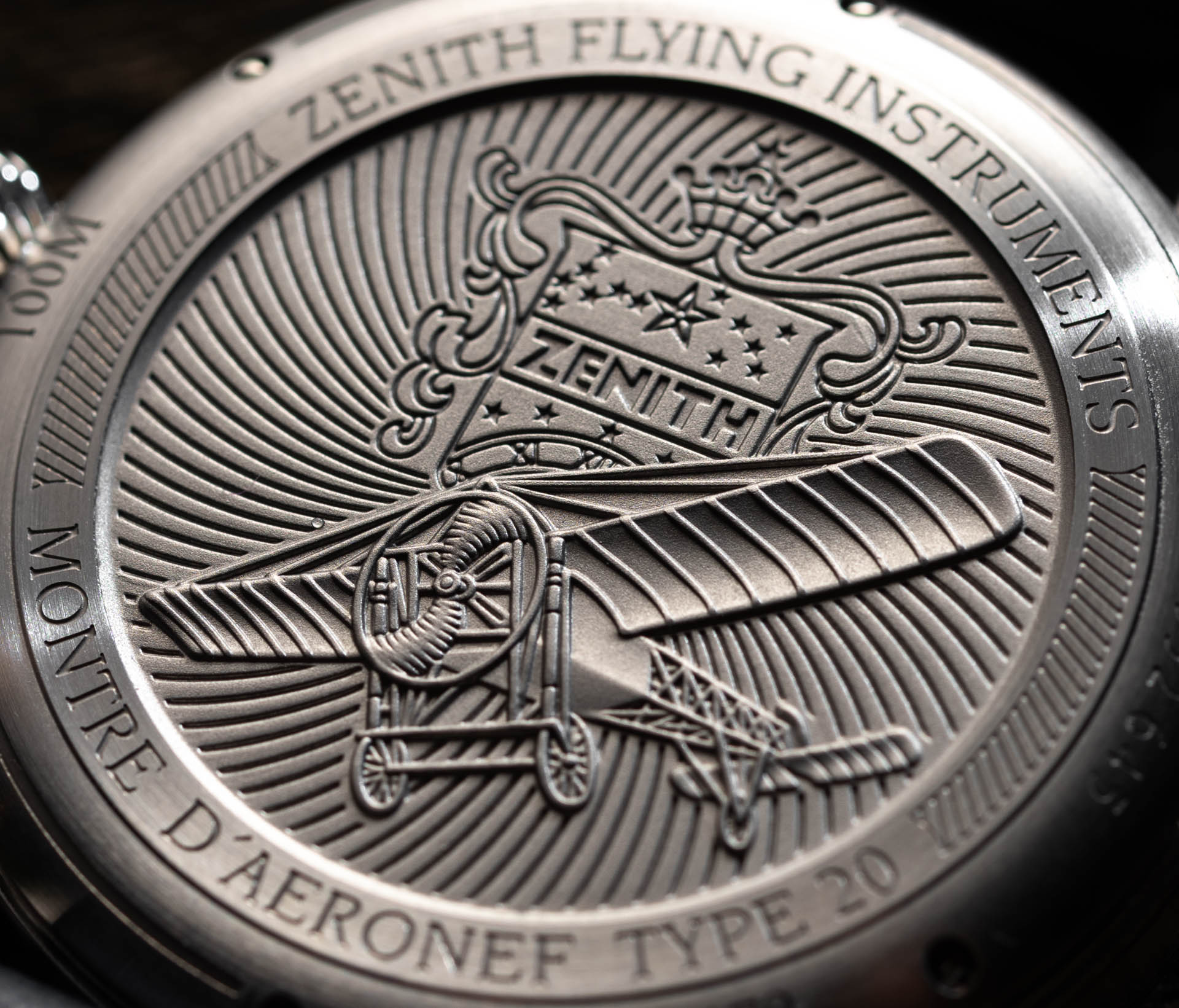
The caseback is a beautifully made throwback to this time, with the relief of a wheelbarrow with some wings attached to it. Sorry, I mean, a Blériot XI monoplane designed by Raymond Saulnier. It may require the mental age of an eight-year-old, but I’ll say there is something cool, or at least fun, to wearing a watch that looks and feels like a timepiece that would have flown through the sky. Because early wristwatches did, wrapped around the thick leather coats of early pioneers of aviation. The Zenith Pilot Type 20 Blueprint is a beautifully made Swiss luxury watch, and we’ll see to that aspect in a moment, but that won’t take away a thing from its captivating aviator vibes. Well, at least not in the eyes of those smitten by this early 1900s aviation connection.
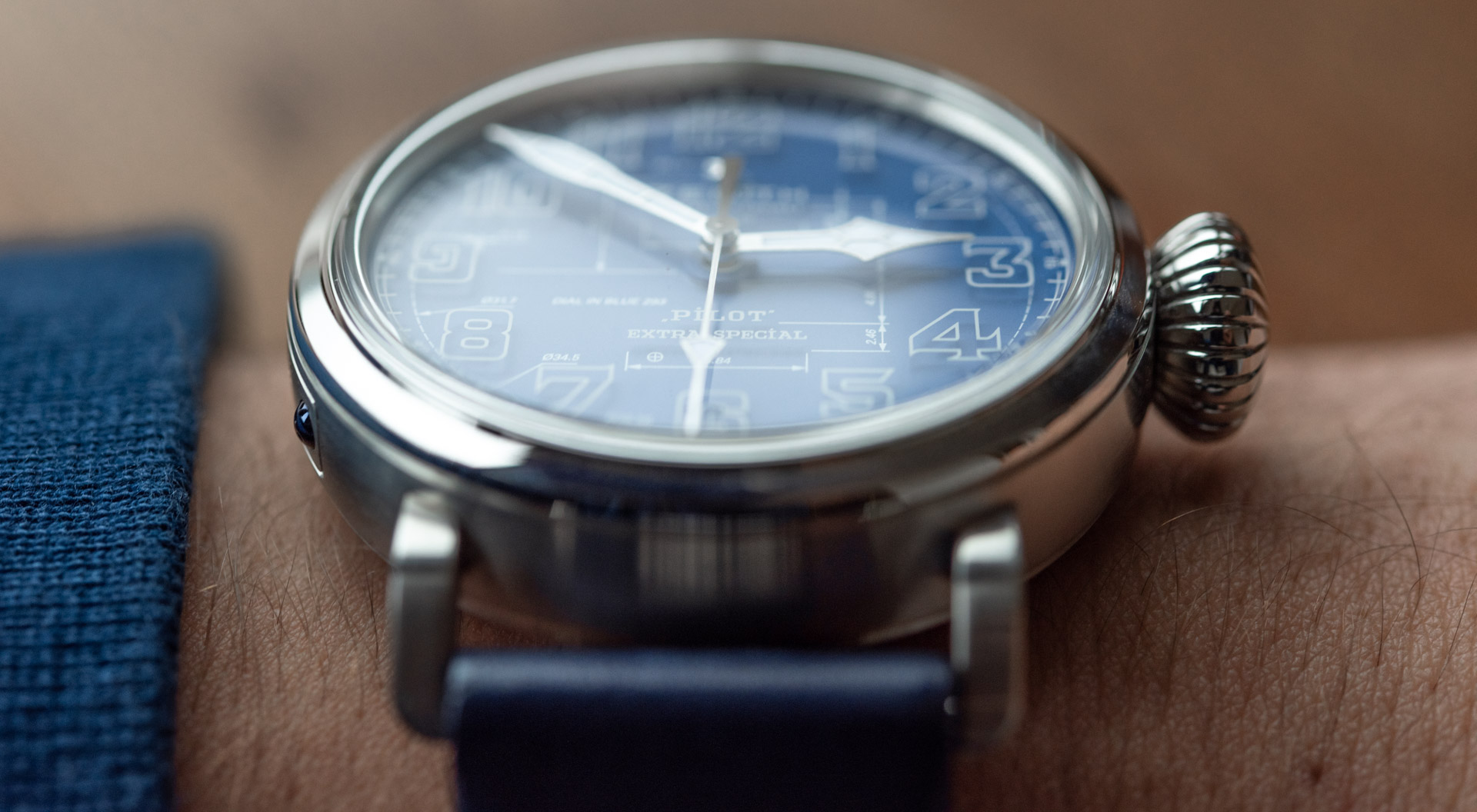
On The Wrist: The Zenith Pilot Type 20 Blueprint
It’s big, but not brutish. It’s always there, but never (on my wrist) uncomfortable. It’s fun… And, yeah, sometimes a bit goofy. It’s a watch that can, in a way, humor itself — and its wearer better be that sort of a personality, too. How you wear it and what you wear it with will play a greater than average role in determining how the Pilot Type 20 looks on you. Whereas a Daytona you can strap on and it will always be just that — a Daytona — irrespective of whether you wear it with swim trunks or a tuxedo, the Pilot Type 20 looks best when worn with any sort of a long-sleeve item. It doesn’t look particularly great without something next to it — let that be a sweatshirt, a leather jacket, or a white shirt.

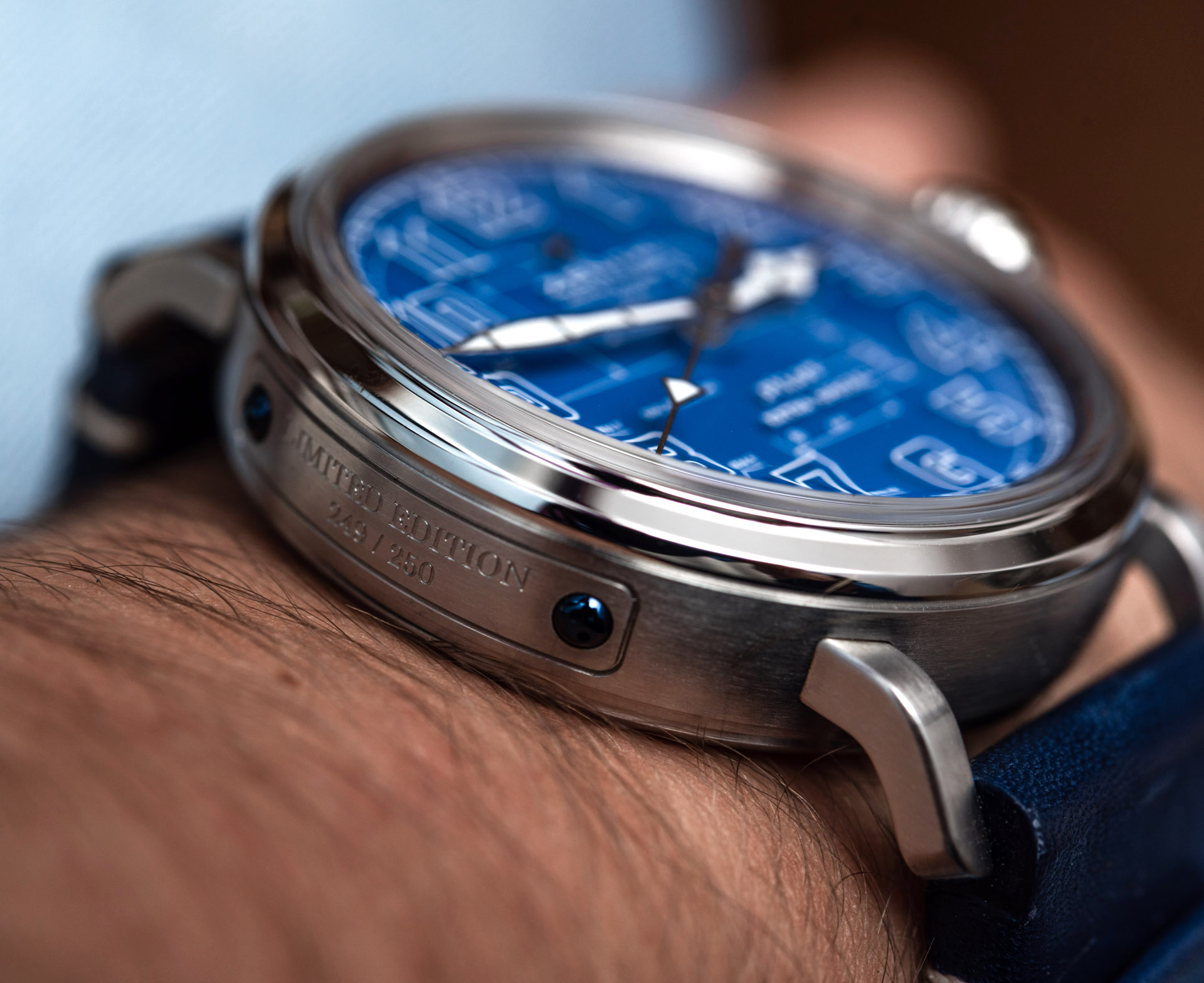
Flick your wrist, and the 45mm-wide, steel-cased watch transforms and becomes an expensive-looking object that looks a lot more like an $8,200 watch should. As captured above, the component that stands out most in terms of beauty of craftsmanship is the bezel. It has such a remarkably even surface with such a blindingly bright polish that belongs in this price segment and not one under. Still, could Zenith have used a low-rent case and have it called “a tool watch” for the same price? Yeah, but I’m so glad the brand held on to its dignity and didn’t assign a low-rent case to the Pilot Type 20. It would not have been right for the price, for the watch, and for the brand. Water-resistance is 10ATM (100-meter equivalent), which is another impressive feat that shows attention to detail. Sure, it’s an aviation-themed watch — but it should be built well enough to withstand an (un-)intentional splash in the pool for $8,200. And for that, you’ll want a 10ATM rating.
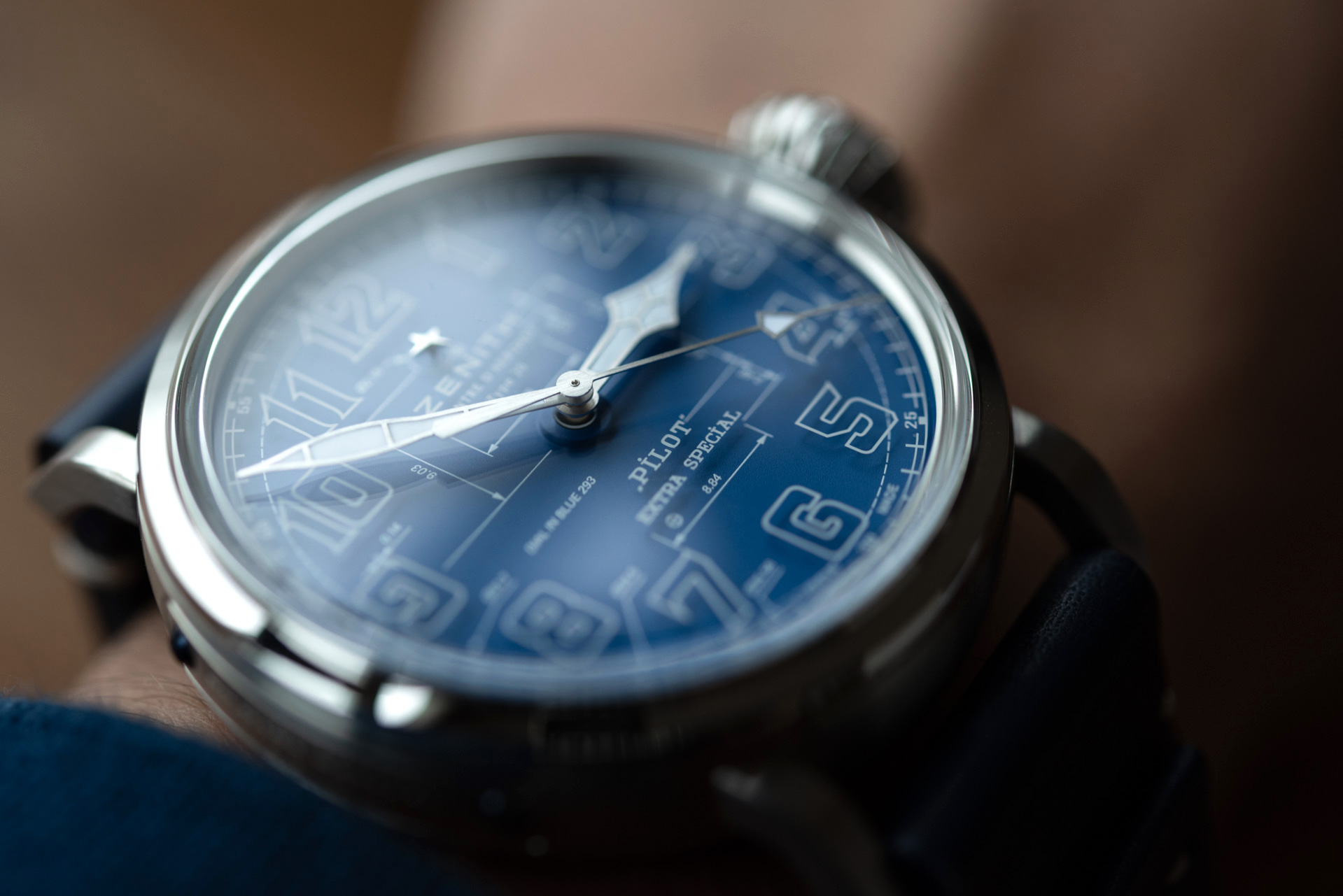

Although the execution of the bezel is what really stood out for me as impressive, it is the dial that is likely to get more attention and praise. Although it is exceedingly difficult to capture in photography, the dial puts on quite a show when viewed in person. It features a matt, grained base dial in blue with some of the blueprint legend and measurements on it in white. This is topped by a sapphire crystal pane that has the large hour markers and the minute track printed on it, along with some extra text such as “Pilot Extra Special,” the Zenith name, and the Zenith star. This creates a fantastic three-dimensionality that is characterized by the shadows cast by the prints on this sapphire dial. The way these shadows interact with the white text underneath, topped by some extra white prints on top, is absolutely spectacular.

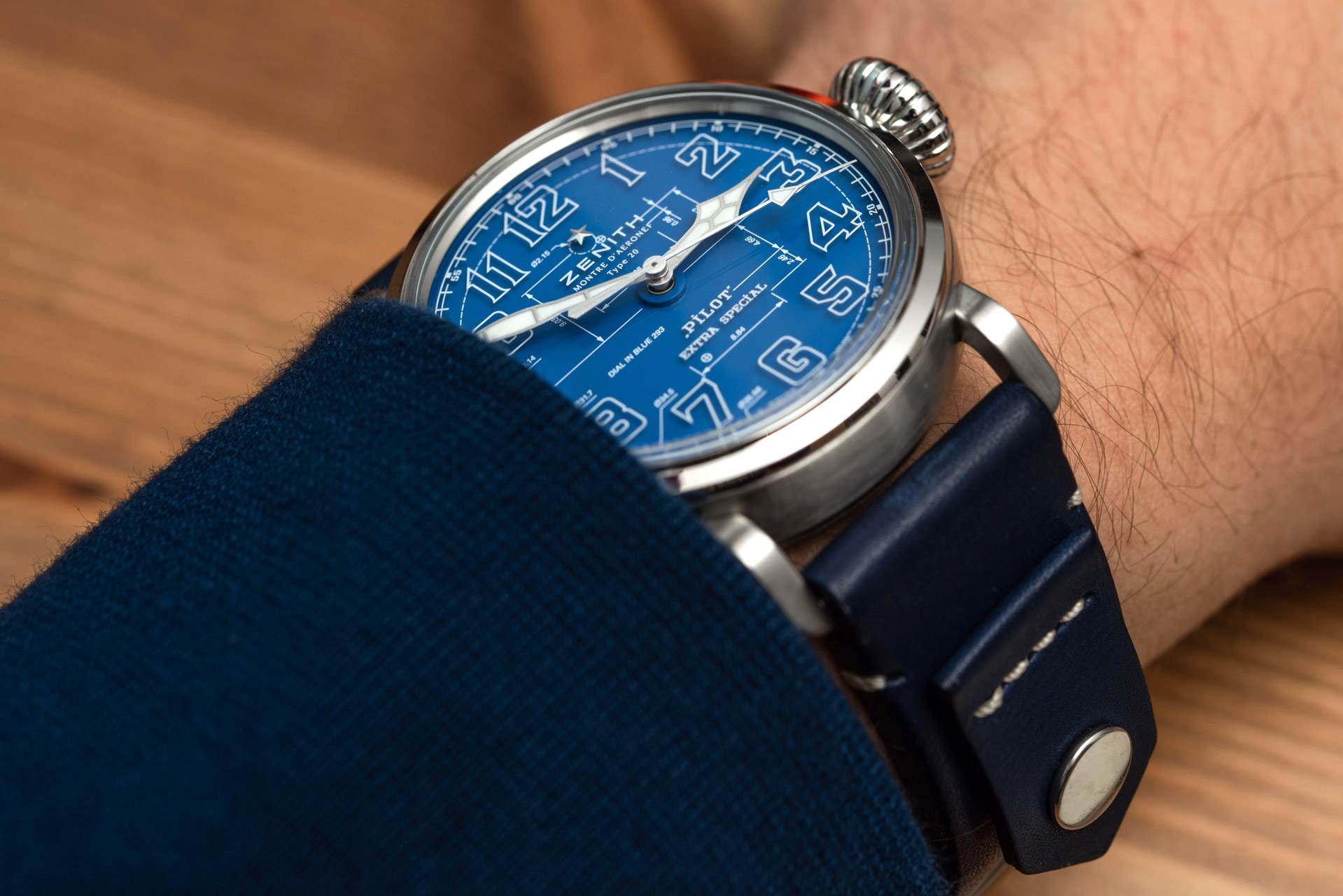
It may have been intentional or just pure coincidence, but it has to be said, combining this technique with a pilot watch aesthetic was an inspired decision. It was because the huge hour markers and equally gargantuan cathedral hands remain perfectly legible even when the play of shadows and light is in full effect. Do this on another, more complex watch — say, a chronograph — and legibility would almost certainly have deteriorated drastically. Notably, under some light conditions, this game of shadows is almost imperceptible, which also is a big help in keeping this feature from becoming annoying or old any time soon.
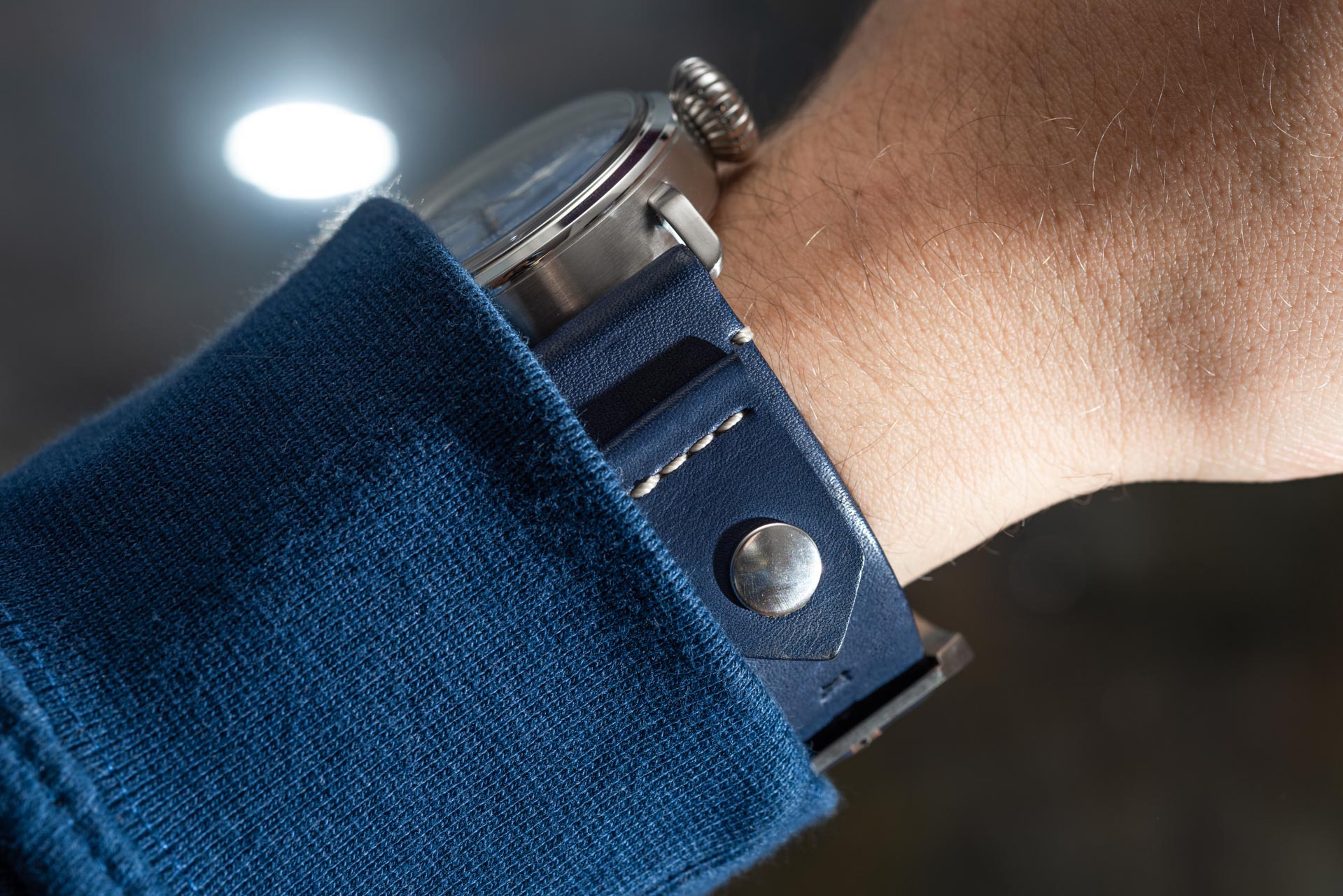
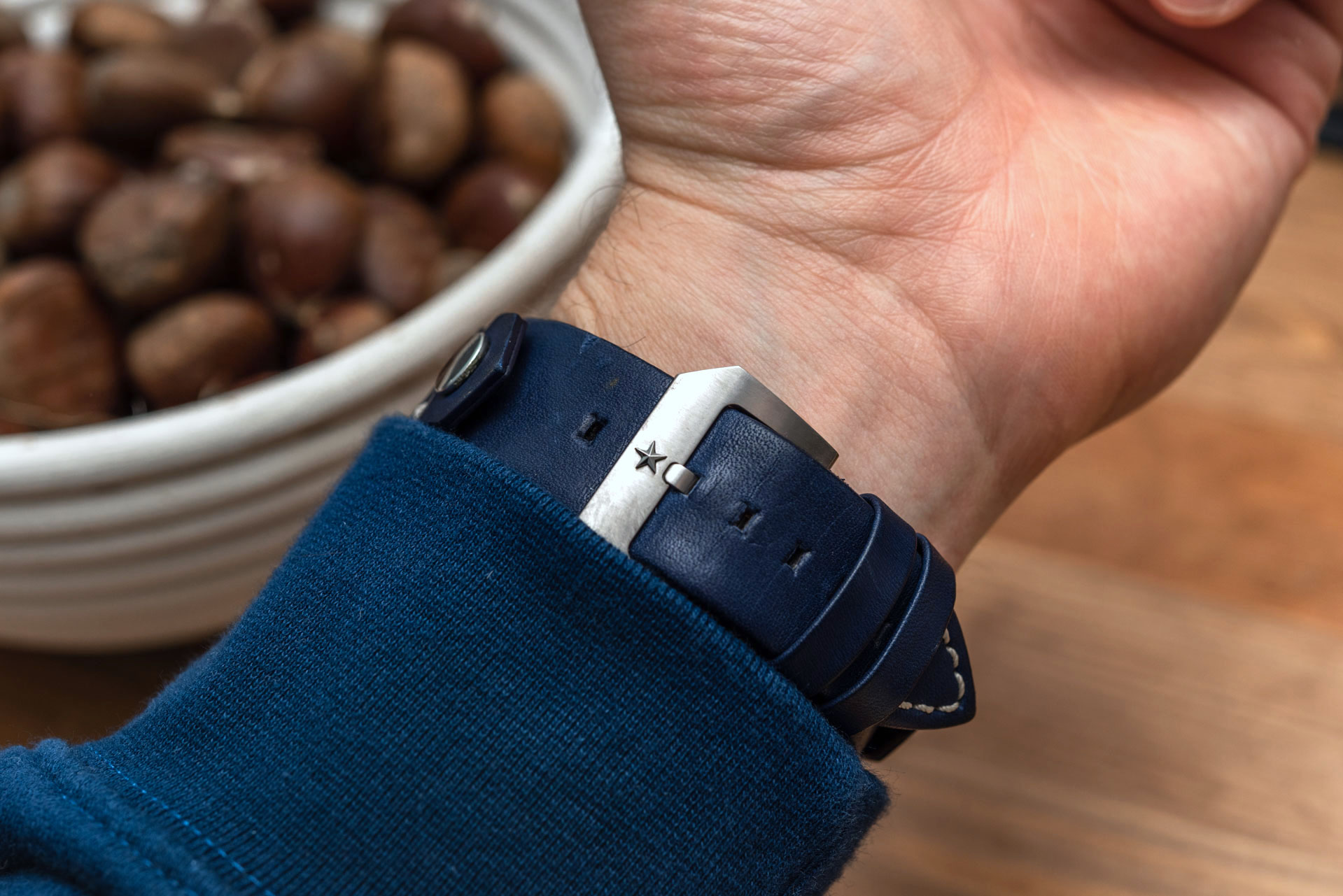
Odd Features And Movement Of The Zenith Pilot Type 20 Blueprint Watch
A truly odd feature of the Zenith Pilot Type 20 Blueprint is the strap that, for whatever inexplicable reason, is snap buttoned to… itself. As I said, this truly is a watch that isn’t taking itself all that seriously, and for that reason, this little feature is to be humored as opposed to overly criticized. Beyond some proper beefed up spring bars, Zenith has even included a tool-free quick-release system in the straps: just press the button and pull the strap away from the spring bar. This, I reckon, should be a standard feature on every watch that costs over, say, three grand. But it isn’t, far from it, and so it is something to be appreciated. I actually grew to like the odd snap button strap because, after two days of storing the watch with the straps rolled up tight, it proved to be a proper comfy strap. Thick calf leather held together by its own mass and not some fancy stitching: a perfect match for the Type 20. It would look more high-end and arguably more badass on a large scale brown ‘gator, though.
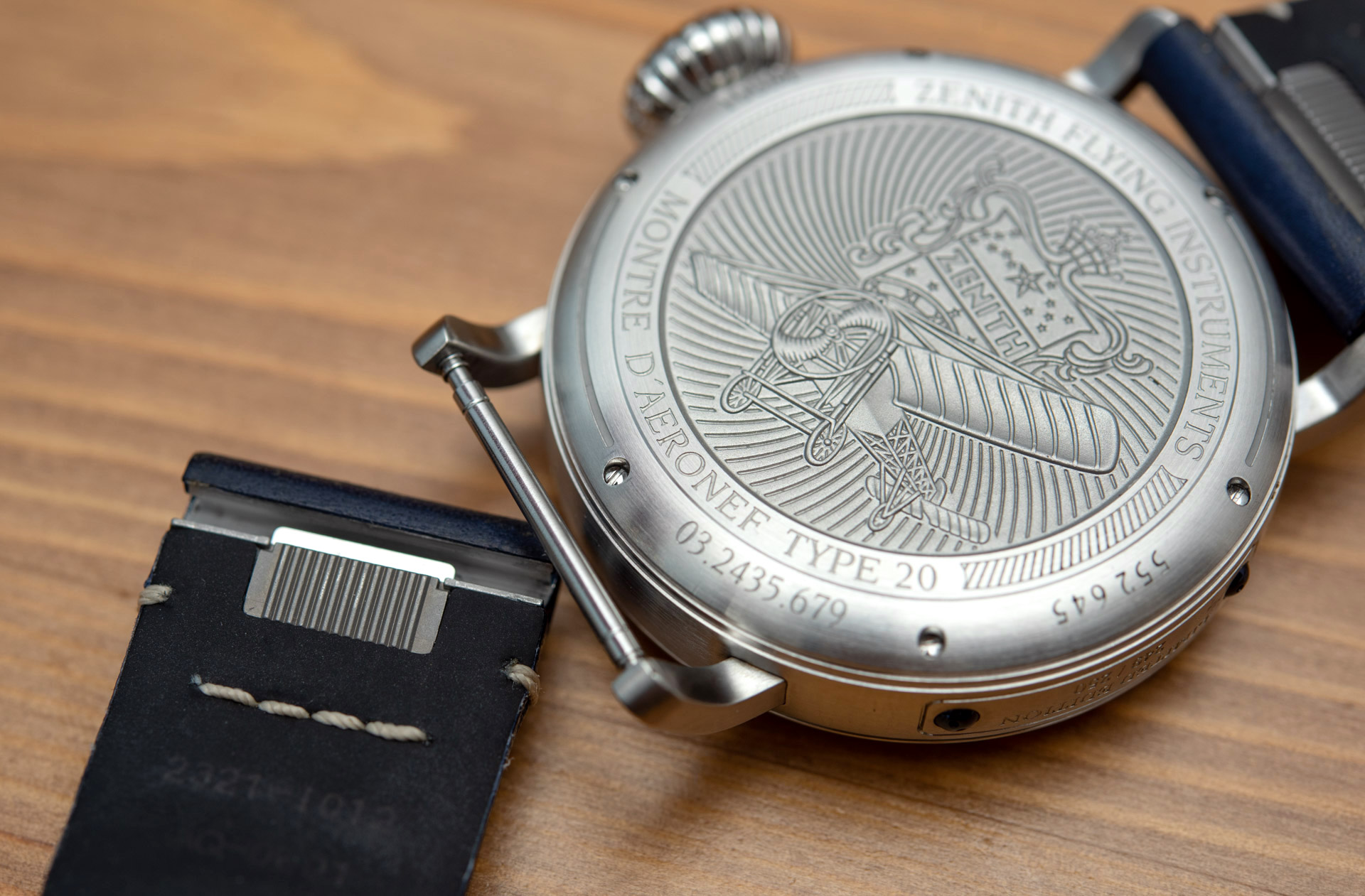

Another cool feature is the massive plaque on the side of the case with the individual serial number. A terrible sight encountered on mighty expensive watches from time to time is when the individual number is in a different font (or, worse still, applied using a different etching technique) than the text around it. Here the plaque looks nicely made, with consistency in the use of the typeface. Even the brushed surface decoration is perfectly consistent with the rest of the case profile. An arguably odd addition to regular watches, but bolted on to a pilot’s watch, this small detail does work just fine. Too bad you don’t see it at all when the watch is on the wrist.
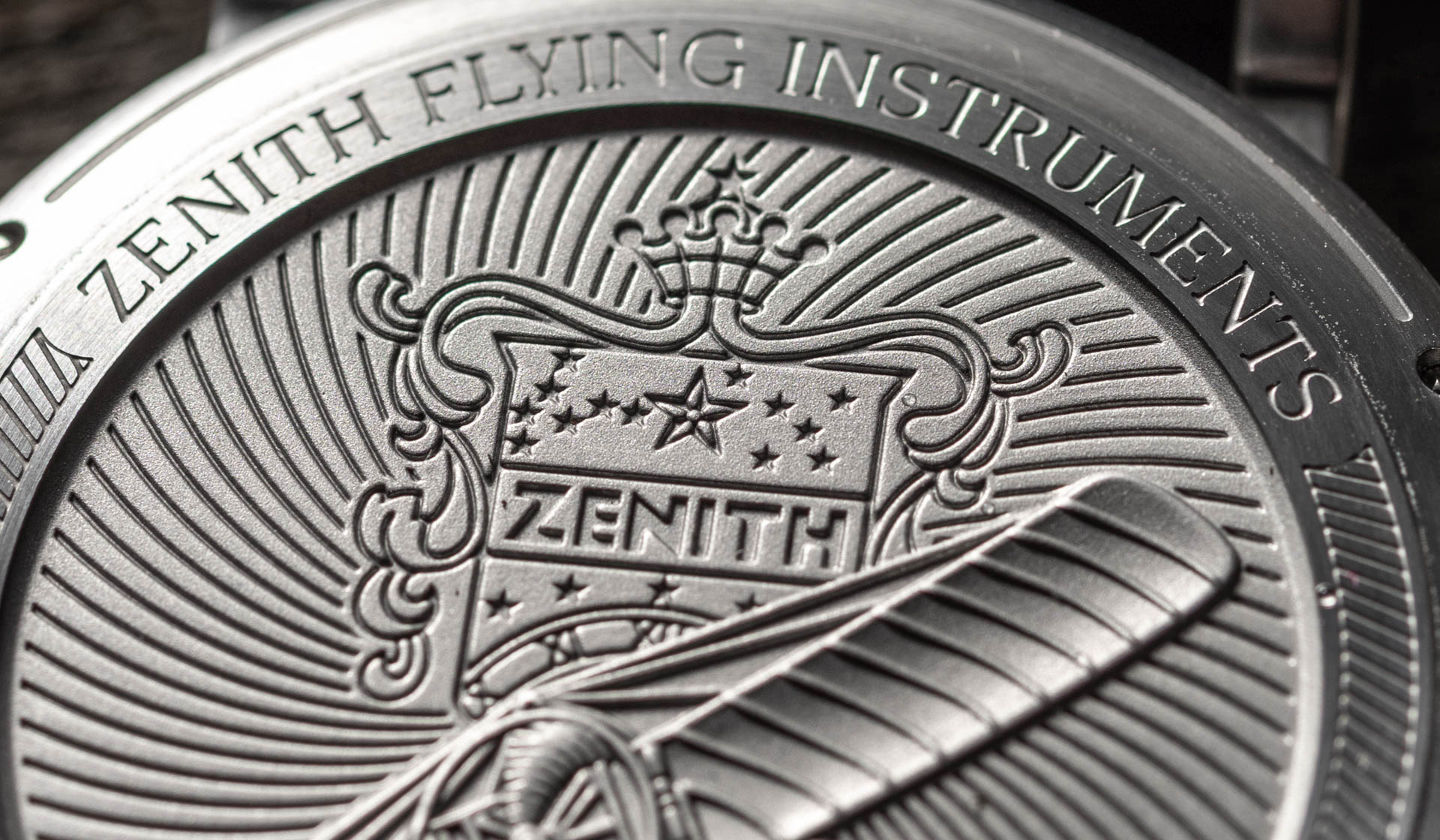
Behind the solid caseback is the Zenith Elite 679 movement, an in-house caliber that runs at a modern 4 Hertz frequency and combines that with a slightly extended 50-hour power reserve. Presented in 2008, the Zenith 679 is not a new generation movement with fancy 3-day (or longer) running reserves, but its specs are good enough to outperform or at least match a big chunk of the competition. A comparable watch from enthusiast-darling Jaeger-LeCoultre provides a 38-40 hour power reserve with 195 to 219 parts (depending on version) in the Polaris. The Zenith Elite 679 makes do with just 127 parts, making it a more elegant design that should also be more robust and serviceable. You shouldn’t need ~200 parts in a three-hand movement. It operates silently, including its self-winding mechanism, and it is smooth to wind through the big crown. Not an El Primero in complexity or historical importance, but still a subtle way of muscle-flexing performed through intelligent movement design.
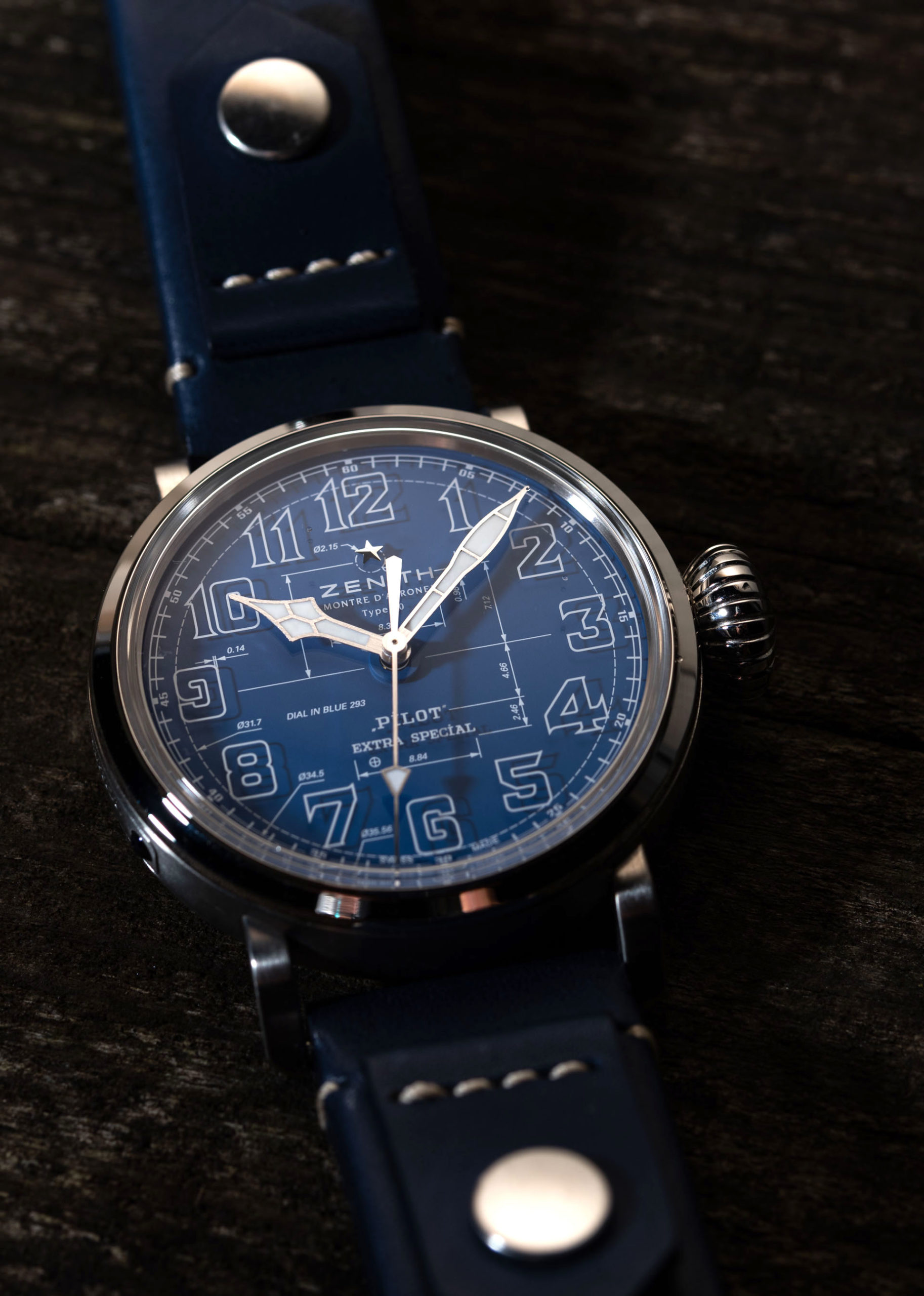
Summary
The Zenith Pilot Type 20 Blueprint is, at last, a proper Zenith. It has all the history you could possibly want matched with a quirky, yet likable style and proper quality of execution inside and out. It isn’t as dry and boring as other watches in this segment, and so you do need a bit of character and courage to pick this one over others. But once you do, I don’t think you’ll be disappointed by it. Au contraire. I enjoyed having this watch around to wear for a few weeks because it, for one, proved to be an immensely likable watch and… You know what? I won’t repeat myself. It isn’t perfect, but it is dripping with character. And that all on its own is enough to propel it into the top 5% of watches currently available in this safe and boring segment. Well done.
The Zenith Pilot Type 20 Blueprint watch is priced at $8,200 and is limited to 250 pieces. You can learn more at the brand’s website.
Necessary Data
>Brand: Zenith
>Model: Pilot Type 20 Blueprint Montre d’Aeronef
>Price: $8,200
>Size: 45mm-wide, 15mm-thick.
>When reviewer would personally wear it: When (dreaming of) flying my monoplane. Seriously? Daily, outside of formal occasions.
>Friend we’d recommend it to first: Zenith and/or pilot watch and/or aviation freak.
>Best characteristic of watch: True to its history for there to be a connection, bold enough to be entertaining. Not your average sleep-inducing vintage nonsense. Solid overall package with a nice case, superb dial, quiet movement, comfy wear.
>Worst characteristic of watch: I fear it’s too bold and too big to gain the first try without which it won’t ever end up on people’s wrist. Man up and at least try a Zenith Pilot. You may be smitten by it.

